




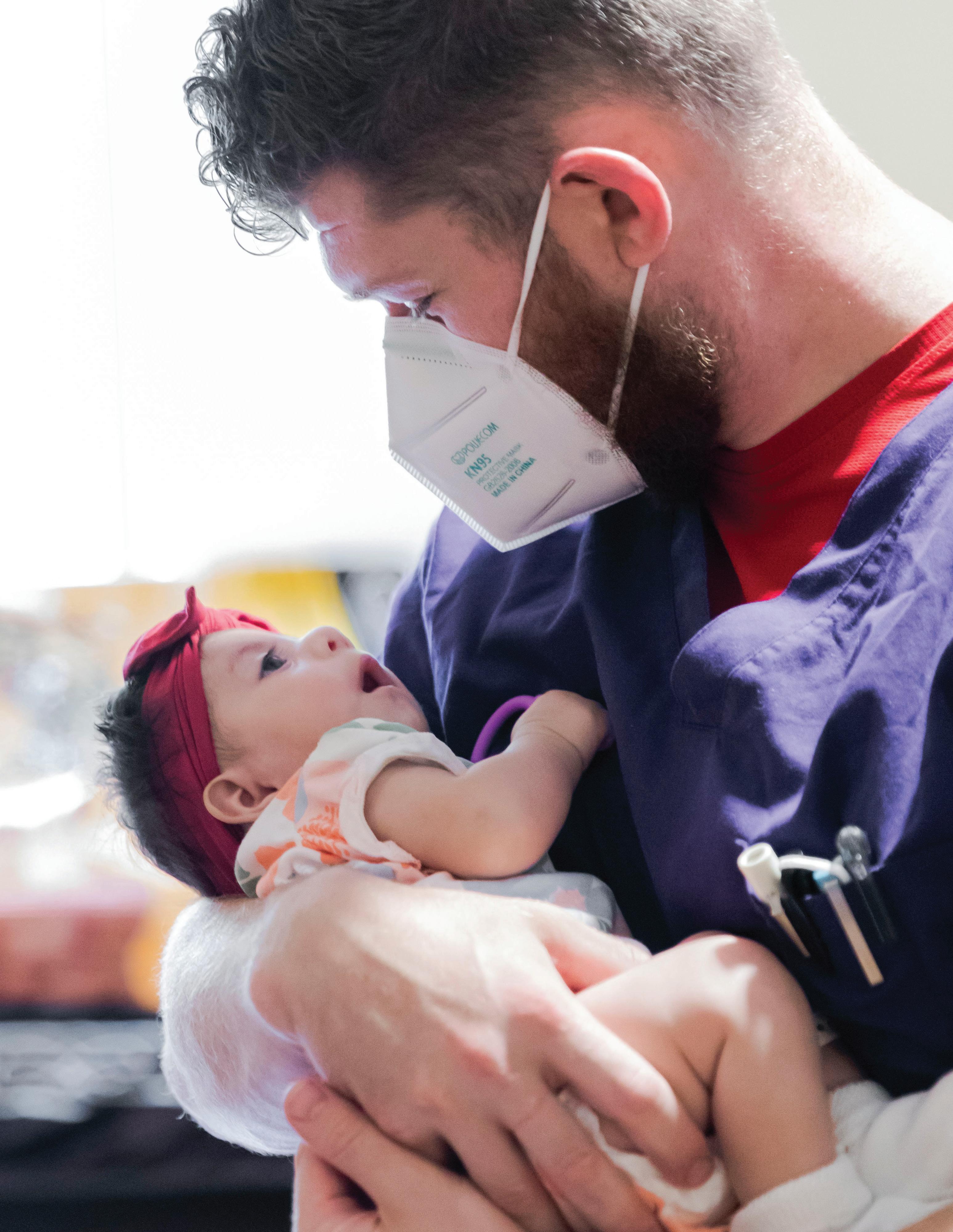
1.1 Mission Statement
The Children’s Home of Pittsburgh & Lemieux Family Center, established in 1893, is an independent, nonprofit organization with a mission to promote the health and well-being of infants and children through services that establish and strengthen the family.
1.2 Organizational History and Background
We continue to achieve and advance our mission through our unique programs: Adoption & Permanency, Child’s Way daycare, Pediatric Specialty Hospital, Pediatric VIEW, Counseling, and Therapy Services.
Please refer to our 2023 Annual Report in the Appendix to learn more about our programs and services.
Adoption & Permanency - Through our Adoption & Permanency program, we have placed more than 7,000 children in permanent, loving homes since our establishment in 1893. Our Adoption staff work with children, birthparents, and adoptive families throughout all stages of the adoption process and after placement, providing a lifetime of support. This results in families, birthparents, and adoptees who are comfortable and confident with their decisions, and less likely to experience adoption-related difficulties.
We are a Statewide Adoption and Permanency Network (SWAN) affiliate. SWAN services help children in the custody of Children, Youth, and Family service agencies to prepare for and achieve permanency. SWAN services also help us train and approve families to adopt older children, sibling groups, and children with special needs. We served more than 290 individuals in 2023.
Child’s Way - At Child’s Way, we offer preschool, daycare, and before- and after-school care for children, age birth to age 21. The first program of its kind in Pennsylvania, we opened Child’s Way in May 1998 and have since served more than 400 children and their families. Child’s Way is a dually licensed Pediatric Extended Care Center and 4 out of 4 Keystone STARS accredited program that is designed for working families as a supplement or alternative to in-home nursing.
Through Child’s Way, we offer on-site services from speech and physical therapies to fixing and fitting adaptive equipment, including braces, wheelchairs, and more. Our inclusive program costs $40 per day, with scholarships and financial aid available to families in need.
Pediatric Specialty Hospital - Our 30-bed Pediatric Specialty Hospital continues to provide family-centered care in a home-like atmosphere. Serving children from birth to age 21, the Pediatric Specialty Hospital provides hospital services for patients transitioning between a tertiary care hospital and home. In addition to providing high quality nursing care to children, nurses and support staff provide family members with individualized education and skills training on how to care for their child’s medical needs after discharge.
Furthering this unique model of care is the Lemieux Family Center, where families can stay on-site for free and practice their new care-giving skills in a home-like environment.
Pediatric VIEW – This initiative treats patients with cortical visual impairment (CVI), a visual disfunction that occurs within the brain. Within Pediatric VIEW, patients receive the tools they need to positively experience the world around them. We focus on our core mission of CVI awareness, early identification, advocacy, and education.
Pediatric VIEW began in the 1990s as an extension of NICU follow-up programs in a Pittsburgh-based hospital. It has been continually administered by Dr. Christine Roman-Lantzy, growing from a local program to one that serves families nationally. During the 30 years that this program has been in existence, it has positively impacted the lives of more than 2,500 neonates and pediatric patients who have experienced birth-related trauma.
Most families seek a CVI Range, which is a functional vision assessment designed to determine the impact of CVI. A written report is then developed as an action plan of targeted interventions and accommodations to support functional vision across a child’s daily routines.
Counseling - By expanding our counseling services and then accepting the insurance coverage that our foster children and families have, we can begin to serve our foster youth internally to ensure they receive the counseling they need as soon as possible. We can also expand this reach to serve other children who are in foster care or have experienced trauma, as well as individuals and families impacted by adoption, infertility, assisted reproduction and donor conception, and eventually the community at large, helping to address the current problem of long wait times and scarcity of providers.
We train current staff and hire additional team members to help meet these growing needs. Our current internal systems and infrastructure can sustain the additional services we will now provide. In terms of culture specifically, it puts behavioral health and attention to the trauma our clients experience central to the services we provide. Our existing and future families can now receive any counseling needs, rather than having to be referred elsewhere, creating a holistic culture of healing and help.
Therapy Services – We have created a cohesive continuum of care for children, where our therapists, teachers, and nurses will work together with families to optimize a child’s individualized plan and progress. Services include occupational, physical, feeding, speech, developmental, and vision therapy and can be administered inpatient, outpatient, or through early intervention.
We specialize in complex swallowing, CVI, seating and mobility, sensory integration, splitting and casting, augmentation communication, and assistive technology.
The Children’s Home of Pittsburgh recently received a trauma assessment from the Department of Human Services and received a trauma sensitive rating.
In Pennsylvania, the transition of human service organizations to a model of care that responds effectively to the impact of trauma on youth, families, caregivers, and communities, and seeks to prevent further trauma, is expected to occur along a continuum. The first step in this continuum is to become “Trauma Aware.” Further along this continuum, are levels of knowledge, skill, agency structure and culture, that represent a level of care meeting the “Trauma Sensitive” standard, and then the “Trauma Informed” standard and finally, the highest level of Trauma-informed Care in which the approach is consistently “Healing Centered.”
We were also awarded the Silver Level 2023 PA Equity in Early Childhood Education Champion Award.

Our Child’s Way daycare received its 4 out of 4 Keystone STARS re-designation in 2024. Keystone STARS (Standards, Training/Professional Development, Assistance, Resources, and Supports) is a quality rating system that promotes quality improvement in early learning and development programs and school-age childcare. A Keystone STARS designation informs parents that their children are in a safe, respectful environment in which they are learning new things every day to support their current and future successes in school and in life.
Our Pediatric Safety Hospital received the Gold Standard in safe sleep. Cribs for Kids’ National Safe Sleep Hospital Certification program recognizes hospitals and hospital systems for their commitment to infant safe sleep to reduce the risk of Sudden Unexpected Infant Death (SUID), Accidental Suffocation and Strangulation in Bed (ASSB), SIDS, and unsafe sleep injuries. The program confers a bronze, silver, and gold designation to hospitals that model and teach infant safe sleep according to current American Academy of Pediatrics (AAP) best practices outlined in the Cribs for Kids Certification Manual and Hospital Certification Toolkit.
The Council of the City of Pittsburgh declared Tuesday, October 24, 2023, as Pediatric VIEW Day in the City of Pittsburgh. Our Pediatric VIEW practice is devoted to cortical visual impairment (CVI) advocacy by promoting awareness, identifying those who are at risk, and collaborating with professionals to improve outcomes in development and learning. The Council commended the Pediatric VIEW Program of The Children’s Home of Pittsburgh & Lemieux Family Center for its extensive work in CVI.
Our team includes a Child Passenger Safety Technician (CPST). A CPST is an educator in the proper use of car seats, booster seats, seat belts and vehicle safety systems to help save lives, prevent injuries and deaths. CPSTs are trained educators in the field of occupant protection. The National Child Passenger Safety Technician Certification Training is a nationally standardized curriculum developed through a partnership of organizations (National Highway Traffic Administration NHTSA, National Child Passenger Safety Board NCPSB, and Safe Kids Worldwide).
In compliance with the Patient Protection and Affordable Care Act of 2010, nonprofit, tax-exempt hospitals must complete a Community Health Needs Assessment (CHNA) every three years, adopting an implementation strategy to meet identified health needs.
We conducted our three-year CHNA between December 2023 and May 2024 to:
• Better understand and identify health needs in our community
• Develop a roadmap to direct resources where services are most needed
• Collaborate with community partners to make a positive impact
• Improve the health of our community and achieve measurable results
Over the course of those six months, a strategic assessment was conducted to solicit input from community members and a diverse group of steering committee members who work with children and families. This assessment included community surveys, steering committee and community stakeholder interviews, and secondary data analysis. As a result, the following needs were identified and prioritized in order of importance based on the perceived urgency in the community:
• Support, services, and education for children and families with special needs and complex medical issues
• Trauma informed care through the lenses of diversity, equity, inclusion, and belonging
• Successful transition for children who receive acute medical care to their home/family/community, which includes transportation and housing
• Holistic approaches to healthcare by local pediatricians and primary care providers
• The opioid epidemic, including neonatal abstinence syndrome in babies, addiction in caregivers, and resources for women who may be pregnant
In addition, we surveyed the community about the priority of services, including:
• Access to pediatric therapy services (including physical therapy, occupational therapy, feeding therapy, speech therapy, developmental therapy, and vision therapy)
• Access to dental and vision services for medically complex children
• Access to affordable, quality childcare
• Access to timely mental health support
• Access to affordable, quality food and nutrition, including donor milk and formula
Finally, we gave the community an opportunity to alert us to other concerns or issues that we should be aware of.


Located in the City of Pittsburgh, The Children’s Home primarily serves children and families in and around Allegheny County. However, throughout the year, patients and families come to us from all areas of Pennsylvania as well as from neighboring states. The Pediatric Specialty Hospital focuses on caring for these medically fragile infants and children from birth to age 21. Patients are admitted from surrounding hospitals, including Children’s Hospital of Pittsburgh UPMC, Magee-Womens Hospital of UPMC, West Penn Allegheny Hospital, and outlying hospitals.
The information in this section is an excerpt from the US Census Bureau for Allegheny County. See the appendix for more detail. QuickFacts County, Pennsylvania provides statistics for all states and counties. Also for cities and towns with a population of 5,000 or more
Topics
Every five years, the Allegheny County Health Department (ACHD) engages the community in an assessment and the development of a plan to improve the health of residents, called the Plan for a Healthier Allegheny 2023-27. The plan prioritizes issues identified by residents from the 2019 and 2021 community health surveys and in the 2022 Community Health Assessment. The purpose is to establish goals and objectives for improving health outcomes, and metrics for evaluating progress. At the same time, the plan identifies strategies, lead county agencies, and the organizations that are currently, or could contribute to the advancement of the health of our community.
Plan for a Healthier Allegheny 2023-27 has three priority areas: physical health, behavioral health, and the environment. For each area, there is one overarching goal with a set of supporting goals. The overarching goal has one metric that will be used for evaluating progress. For each subordinate goal, there are multiple objectives, each of which is tied to one or more metrics for evaluation. In addition, potential or actionable strategies have been identified. This list is meant to be suggestive, rather than exhaustive. For each priority area, the ACHD has identified a lead county agency that will help coordinate the communication of the plan, the gathering of data, and the reporting of progress.
The information in this section is an excerpt from Plan for a Healthier Allegheny 2023-2027, which The Children’s Home used to help guide initial discussions of community need to align with Allegheny County and its residents. See the appendix for more detail.
Overarching Goal:
Allegheny County residents live healthy lives as demonstrated by their physical and behavioral health and the environments in which they live, learn, work and play.
Summary of Priority Goals
Physical Health Goals:
Goal 1. People of all ages engage in behaviors that promote physical health and reduce the risk of chronic diseases.
Goal 2. All people have appropriate places to obtain medical and dental care.
Goal 3. Decrease disparities in life expectancy and chronic diseases in Allegheny County.
Behavioral Health Goals:
Goal 4. People have access to behavioral health services, including treatment for substance use disorders.
Goal 5. People will participate in programs and activities that support mental health and wellbeing
Environmental Goals:
Goal 6. More people live in stable and safe housing.
Goal 7. Fewer people experience violence in their homes and communities.
Goal 8. More residents live in communities that are prepared to adapt to and absorb the impacts of climate change.
Guiding Principles:
§ Equity driven
§ Community engaged
§ Data supported
§ Policy oriented
The Children’s Home Steering Committee directed the assessment, providing input based on their backgrounds and experiences. The committee was composed of a diverse group of community representatives that work directly with pediatric populations, women and mothers, and people with disabilities.
The initial Steering Committee meeting served to prioritize health needs currently affecting the pediatric population from a list of issues developed internally amongst staff of The Children’s Home. Using facilitated discussions, the committee developed five key focus areas and services in conducting the CHNA. These focus areas and services were created considering the priority and urgency of needs in the community and the feasibility of The Children’s Home having the capacity to address them.
• Bethany Bartilson – Program Relations Manager
• Dr. Beverly Brown – President of Medical Staff, Hospitalist
• Kelly Cravotta – Clinical Nurse Educator, Pediatric Specialty Hospital
• Taylor Dozier – Events and Development Manager
• Renee Gwin – Director of Therapy Services
• Ashley Herbert – Clinical Supervisor, Pediatric Specialty Hospital
• Lisa Houlihan – Chief Nursing Officer
• Pam Keen – Chief Executive Officer
• Kristie Lindblom – Permanency Social Worker Trauma Lead, Adoption & Permanency
• Jennifer Pease – Grants and Community Relations Manager
• Kim Phillips – Chief Financial Officer
• Dr. Christine Roman – Director of Pediatric VIEW
• Dr. Sarah Rubin – Critical Care Manager, Hospitalist
• Stacy Schesler – Chief Operating Officer
• Katie Schrieber – Marketing and Development Associate
• Courtney Stevenson – Manager of Care Coordinators, Pediatric Specialty Hospital
•Emily Landerman
• Ranny Ferguson
•Dr.UrmiAshar– Director of Public Health Programs, Duquesne University
•SeanBeauford –CommunityEngagementSpecialist, Duolingo
•RhondaGengler – Chief Nursing Officer, DHS Office of Dev. Programs
•SaraHussey – Allegheny County Medical Society Foundation
•Dr.FainaLinkov –Epidemiologist,DuquesneUniversity
•Dr.MichelleMcCann – Assistant Dean of Community Engaged Learning and Service, Duquesne University
•KristinMichener–InterimHealthCareofPittsburgh,Inc
•FaithPaulickPerez– Parent
•Dr.HeatherRusiewicz– Chair of Speech Language Pathology, Duquesne University
•PamelaSchön – Chief Operating Officer, Bloomfield Garfield Corporation
•KristenZollner – Provider Contract Analyst, Highmark Wholecare

The CHNA survey was developed from the needs affecting children and families determined by the Steering Committee and internal input from The Children’s Home. The survey was shared with and distributed widely, including:
• TCH email blast – approximately 7,000 recipients
• Allegheny County Medical Society physician members and foundation grantees –approximately 2,000 recipients
• Local Bloomfield Garfield Corporation website, social media, QR flyer, and bulletin –approximately 2,000 recipients
• TCH social media – LinkedIn, Facebook, Instagram – approximately 1,000 recipients
• Pennsylvania home care agencies and families
• Allegheny and Butler county Early Intervention providers
• Local university contacts
• Steering committee social media share

The information in this section illustrates community member input through a confidential online survey. Answers were weighted and scored for Questions 1 and 2, with the highest priority receiving the highest score. Key findings include:
• Community members indicated that support, services, and education for children and families with special needs and complex medical issues was their highest community health priority.
• They also indicated that that access to pediatric therapy services (including physical therapy, occupational therapy, feeding therapy, speech therapy, developmental therapy, and vision impairment support) was their highest services priority.
Q 1 Please rat e t he f ollowing communit y healt h needs f rom highest t o lowest priorit y Use t he up and down arrows t o move t he rows.
l is t ic appr o aches t
S upport , s erv ic es , and educ at ion f or c hildren and f amilies wit h s pec ial needs and c omplex medic al is s ues
Trauma inf ormed c are t hrough t he lens es of div ers it y equit y, inc lus ion, and belonging
The opioid epidemic, including neonatal abstinence syndrome in babies, addiction in caregivers, and resources for women who may be pregnant
S uc c es s f ul t rans it ion f or c hildren who rec eiv e ac ut e medic al c are t o t heir home/ f amily / c ommunit y, whic h inc ludes t rans port at ion and hous ing
Holis t ic approac hes t o healt hc are by loc al pediat ric ians and primary c are prov iders The opioid epidemic , inc luding neonat al abs t inenc e s y ndrome in babies , addic t ion in c aregiv ers , and res ourc es f or women who may be pregnant
Q 2 Please rat e t he f ollowing services f rom highest t o lowest priorit y. Use t he up and down arrows t o move t he rows.
Respondents also indicated other areas of concern in Question 3, including resources for non-English speaking families, post-partum supports, and access to healthcare in non-urban areas. As indicated in Question 4, we gave community members the opportunity to provide their zip code, so we can further tailor our response. You can see an excerpt of their responses here.


Q 5 W hat is your t ot al household income?
Q 6 W hat is your et hnicit y (choose all)?
2024 Com m uni ty H eal th Needs Assessm ent
SurveyM onk ey
Q 7 W hat is t he highest degree or level of school you have complet ed?
No s ch o o l in g co mpl et ed
Up t o 8t h gr ade
S o me h igh s ch o o l , n o
High s ch o o l gr adu at e,
S o me co l l ege cr edit , n o
Tr ade/ Tech n ical / V o cat io n al
A s s o ciat e degr ee
Bach el o r 's degr ee
M as t er 's degr ee
Pr o fes s io n al degr ee
Do ct o r at e degr ee
A ns wered: 63 S k ipped: 5
Q 14 Do you or anyone in your f amily have complex medical or behavioral needs?
A ns wered: 65 S k ipped: 3
• ADHD and breast cancer
L
• Five-year-old son has Cortical Vision Impairment and Hydrocephalus
• Autism
• Adult child with autism
• History of complex medical needs and current MH needs
• My 5-year-old won’t speak. My 4-year-old still wears diapers. My 3-year-old won’t sleep.
• Two children adopted from the foster care system with behavioral, emotional, and significant medical needs
• Son - ADHD
• My children both have behavioral health needs and are taking medication
• PTSD, ADHD, anxiety, autoimmune
• An adult child who suffers from depression
• Sister is epileptic and has undiagnosed ADHD and is neurodivergent
• Autism, FASD, ADHD, Sensory Processing Disorder, PTSD, Anxiety, OCD
• Our son was very medically fragile requiring in-home nursing care on a daily basis. He passed at 5 years of age
• Mental health struggles
• Autism / ADHD / learning disabled / genetic heart condition
• CP, CVI, PVL, global delay
• Diabetes, Aortic Dissention
• Delayed 2-year-old
• One child with multiple complex medical diagnoses, intellectual impairment, visual and hearing impairments
• One child with multiple chronic medical issues
Q 16 Do you or anyone in your f amily have a disabilit y t hat could impact your access t o care (e. g. physical impairment , neurodivergent , learning disabled, int ellect ually disabled)?
• ADHD and Dyslexia
• Adult child with autism
• I am having problems with reading
• Dental work is extremely difficult with these kids and Children’s dental is unhelpful with kids who are over 12 or something like that. Won’t take me patience. The wait is like a year. There’s also a need for educational advocates to help families navigate IEP’s with reluctant school districts
• Neurodivergent
• Autistic / ADHD / learning disabled
• Son has Down Syndrome, seizure disorder, cardiac pacemaker, hearing loss, non-verbal
• My son with therapies and help for me
• Child with intellectual disability
Q 18 Have you or a member of your f amily received services f rom T he Children' s Home?
• FVA from Dr. Roman-Lantzy
• My niece had a baby born premature at 25 weeks
• Post-adoption counseling
• Infant adoption
• CW
• Child attended medical daycare at Child’s Way for 4 years
Q 20 Are you int erest ed in learning more about T he Children' s Home and t he services we provide?
Key stakeholder interviews supported many of the findings of the community survey and highlighted barriers to services to underserved populations. Some of these overarching themes included access to care, disparities in healthcare, barriers for children with special needs, and specialized education. These interviews also served to aid in developing potential partnerships for the CHNA strategic implementation plan.
 Kristin Michener
Kristin Michener
Director of Health Care - Pediatric and Adult Shift Care, Interim HealthCare of Pittsburgh, Inc.
Briefly describe the work you do in the community and/or your role at[company/organization].
Our agency cares for children and adults in their home, school and community setting with nurses and/or home health aides.
How does your work relate to The Children’s Home and the populations we serve (e.g. maternal health, pediatrics, people with disabilities, medically fragile babies and children)?
Medically fragile babies and children with in-home, school and community shift nursing and or aide care.
What are the issues faced by the people you work with/serve?
Our biggest barrier is recruiting home health nurses to service all children and or adults to assist with the transition from facility to home for shift care.
What are some solutions that could help resolve these issues (e.g. new programming or building on existing programming, community outreach/awareness, support groups)?
• Increase competitive shift nursing and aide reimbursement rates set at the state level to coincide with neighboring state rates.
• Currently working with PHA on a cost report to present to Harrisburg mid-April with the end goal of raising the shift nursing care rates.
How can The Children’s Home help you do your work or help those you serve?
Continue to work with agencies in their efforts to support lobbying within the state of Pennsylvania to make a change.
What are some tangible things that we could feasibly do to make a difference in the short-term? Long-term?
Long term - open another Childs Way in the North and our South setting to support medically fragile children so the primary family unit can continue to work to support their family in a more purposeful, meaningful way.

Briefly describe the work you do in the community and/or your role at[company/organization].
I am a foster care and SWAN social worker. As a foster care worker, I ensure that children are sufficiently nourished, check up on their living conditions, offer ongoing support and psychoeducation to foster parents in need of help, monitor a child’s progress and advocate for children in youth in the various systems they interact with (educational, medical, judicial, etc.). I work with children and their families at all stages of the adoption process, from child preparation to post permanency services. I also provide training to foster parents through our REACH collaborative and professional training to colleagues at statewide conferences.
As Trauma Lead, I run our Diversity, Equity, Belonging, Inclusion, and Trauma (DEBI-T) committee, which views DEI through the lens of Trauma. DEBI-T’s mission is to create a trauma-informed, culturally humble space to explore systems of oppression and understand their impact on children, families, and workers within the child welfare system, so that we can identify our professional roles in acknowledging them and best serving all of our clients.
How does your work relate to The Children’s Home and the populations we serve (e.g. maternal health, pediatrics, people with disabilities, medically fragile babies and children)?
As a front-line worker in the organization, I offer direct service to youth and families in foster care. These populations see disparities in black and brown families, LGBTQ, medically fragile, neurodivergent folks.
I train families on trauma, cultural humility, child development, grief and loss, neurodiversity, and support them as they navigate various personal and systemic obstacles on their journey. As Trauma Lead, I offer an added layer of guidance and support to my departmental colleagues, working to ensure a trauma informed and healing centered culture.
What are the issues faced by the people you work with/serve?
Children and youth come into care having experienced abuse and neglect. Poverty, including houselessness, parental addiction, parental incarceration, and issues of mental health often compounds this. Trauma is significant, and family separation in and of itself is a trauma beyond the circumstances that brought them into care. There are substantial disparities for youth who are black and brown, medically fragile, neurodivergent, and in the LGBTQ community.
Those in care are at greater risk of trafficking, making those disparities even more dangerous. Other increased risks include increased emotional and behavioral problems, inconsistent medical care, inconsistent education, increased institutionalization, and limited supportive connections.
In our direct work with these children, we find children being moved from one county to another which exasperates the inconsistencies of care and support. It also adds to an already difficult struggle to find services that 1) do not have a waiting list and 2) will take their out of county insurance. For all our children and youth in the system, it is difficult to find competent trauma, attachment, and adoption competent therapists who take
Our families often have an historic struggle with their own infertility and child loss. Common personal issues experienced by our clients of all ages include loss, rejection, shame/ guilt, grief, identity, intimacy, mastery and control.
What are some solutions that could help resolve these issues (e.g. new programming or building on existing programming, community outreach/awareness, support groups)?
• Greater number of therapists competent in Trauma informed care and therapies, especially those who can take MA clients
• Greater number of therapists competent in Neuro-affirming care and therapies, especially those who can take MA clients
• Family Preservation Services
• Greater access to mental health care
• Community building activities/ Mutual Aid supports
• Mentorship programs specific to foster youth
• Identification and growth of supports beyond the age of 18 for foster youth
• Building more support services for families after adoption with Post Permanency Services, Support Groups, families open to providing respite
How can The Children’s Home help you do your work or help those you serve?
• Revise policies to be more Trauma informed
• Add Neuro-affirming policies (informed by those with lived experience)
• Greater access to and partnerships with mental health providers
• Strategic planning to grow foster care and counseling services in a direction to aid the needs of foster youth
What are some tangible things that we could feasibly do to make a difference in the short-term? Long-term?
• Support workers in having low caseloads
• Value and prioritize creating an environment of felt safety
• Transparency
• Departmental flexibility within consistency across organization
• Create a position for someone qualified to make Neuropsych and psychiatric evaluations
• Growth of counseling services to include trauma-based therapeutic modalities
• Consider creation of family preservation services
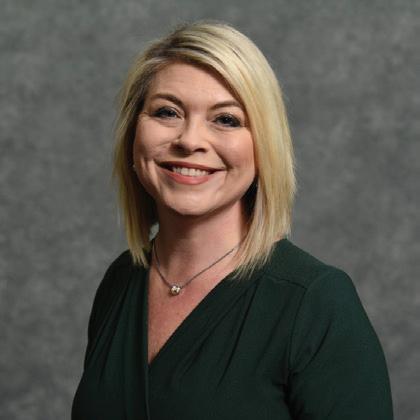 Heather Rusiewicz Chair, Associate Professor, Associate Dean for Research, Department of Speech-Language Pathology, Rangos School of Health Sciences, Duquesne University
Heather Rusiewicz Chair, Associate Professor, Associate Dean for Research, Department of Speech-Language Pathology, Rangos School of Health Sciences, Duquesne University
Briefly describe the work you do in the community and/or your role at[company/organization].
I lead all department operations in the SLP program. I am also the Program Director of the Speech Production Clinic. I oversee and coordinate with others to optimize faculty and student research in Rangos. I teach courses, serve the community, and do research.
How does your work relate to The Children’s Home and the populations we serve (e.g. maternal health, pediatrics, people with disabilities, medically fragile babies and children)?
My clinical and research interests and expertise are in pediatrics, specifically speech and gesture production. I also focus on experiences of individuals with communication disorders and their families. I am also interested in implementation science. My leadership roles also facilitate advocacy of many other aspects of child and maternal/ family health and wellness on behalf of my colleagues.
What are the issues faced by the people you work with/serve?
Lack of access and knowledge regarding augmentative and alternative communication. Limited time for family centered care, education, and empowerment.
What are some solutions that could help resolve these issues (e.g. new programming or building on existing programming, community outreach/awareness, support groups)?
Personally, I have thoughts of creating a program to focus on supporting speech and overall communication confidence and development using music and movement (CommuniMove as a working title ��), as well as resources and education for children and their families on speech, language, and hearing health. This program could be launched with a variety of community partners, including The Children’s Home.
On behalf of SLP and Rangos - there are many opportunities for future programming and growth.
How can The Children’s Home help you do your work or help those you serve?
Our growing collaborations are exciting! I hope that our students will be able to contribute to your mission and be transformed along the way. Our mutual scholarly interests will be great to explore more fully soon.
What are some tangible things that we could feasibly do to make a difference in the short-term? Long-term?
• Educational events for families, staff, community members. Supporting needs for equipment, food, etc.
• Increasing home-based services, such as EI.
• Community events such as health events.
• Perhaps a walk/run to fundraise an raise awareness.
 Urmi Ashar
Program Director, Duquesne University, member of the American Public Health Association
Urmi Ashar
Program Director, Duquesne University, member of the American Public Health Association
Briefly describe the work you do in the community and/or your role at[company/organization].
I am the Director of Public Health Programs at Duquesne University and also serve on the National Science Foundation’s review board for SBIR/STTR grants and serve on several local community organization’s boards.
How does your work relate to The Children’s Home and the populations we serve (e.g. maternal health, pediatrics, people with disabilities, medically fragile babies and children)?
They are all classified federally as special population with disparities from the Public Health perspectives and I am interested in helping Children’s Home serve the needs of this population.
What are the issues faced by the people you work with/serve?
I would love to set up a close collaboration with our programs so we can support the Children’s Home and create opportunities for our students to have experiential fieldwork and undertake Capstone Projects.
What are some solutions that could help resolve these issues (e.g. new programming or building on existing programming, community outreach/awareness, support groups)?
Our students can support your efforts on all these fronts if we have adequate lead time.
How can The Children’s Home help you do your work or help those you serve?
Duquesne serves God by serving students—through an academic community dedicated to excellence in liberal and professional education, through profound concern for moral and spiritual values, through the maintenance of an ecumenical atmosphere open to diversity, and through service to the Church, the community, the nation, and the world.
We see working and collaboration g and supporting Children’s home aligned with our mission at Duquesne.
What are some tangible things that we could feasibly do to make a difference in the short-term? Long-term?
We could help you:
• Establish a process for follow-up on all initiatives identified by the CHNA survey. Our faculty is happy to collaborate with the Children’s Home.
• Help you with ongoing data collection and program design by helping you with your capacity through our students’ efforts in undertaking experiential education courses.

 Michelle McCann Assistant Dean of Community Engaged Learning and Service
Michelle McCann Assistant Dean of Community Engaged Learning and Service
(CELS),
Duquesne UniversityBriefly describe the work you do in the community and/or your role at[company/organization].
Faculty member of the Department of Occupational Therapy at Duquesne University. As the Assistant Dean of CELS, I work alongside all allied health programs within the University to coordinate experiential learning opportunities for students and bridge opportunities for supporting community partners with key topics and/or programs they would like to build collaborations with for enhancing or developing services for clients.
How does your work relate to The Children’s Home and the populations we serve (e.g. maternal health, pediatrics, people with disabilities, medically fragile babies and children)?
Programs within Duquesne University’s Rangos School help provide students with training for working in maternal health, pediatrics, addressing disability throughout the lifespan, caring for medically fragile individuals including babies and children. Services of importance also cover caregiver/parent/guardian education and access to resources. Providing support for evidence-based practice and supporting practitioners in the field is also an ultimate responsibility for work at an academic setting.
What are the issues faced by the people you work with/serve?
Promoting evidence in terms of health literacy level or level of understanding to client audience is very important. The range of resources and ability to receive resources (in-person, telehealth, or cost of resources) is also important. Having access to high quality care, choice of services, timeliness, and long-range of supports is also important.
What are some solutions that could help resolve these issues (e.g. new programming or building on existing programming, community outreach/awareness, support groups)?
All of the above could be partnerships with Duquesne University.
How can The Children’s Home help you do your work or help those you serve?
Continued support of student experiential activities. The partnership is very valued, and we strive to help your programming and be collaborators in finding educational resources to support programming.
What are some tangible things that we could feasibly do to make a difference in the short-term? Long-term?
TCH has many wonderful programs. Goals centered around long-range supports for families and their children are important as children transition out of pediatric services.

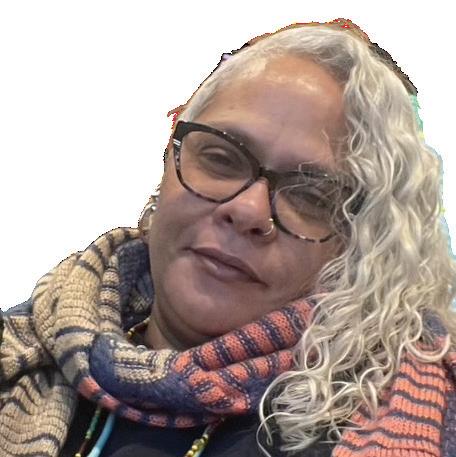 Pamela Schön Chief Operations Officer, Bloomfield Garfield Corporation
Pamela Schön Chief Operations Officer, Bloomfield Garfield Corporation
Briefly describe the work you do in the community and/or your role at[company/organization].
Community-based and board driven, one of the BGC’s main goals is to involve as many people in the community as possible in efforts aimed at physical revitalization, an improved economy, and strengthened well-being. The primary beneficiaries of our projects and programs are low-income individuals and families living or working in Garfield and the surrounding neighborhoods.
As COO, I am responsible for the daily operations, staff and all programming and initiatives.
What are the issues faced by the people you work with/serve?
Lack of affordable housing, lack of accessible greenspaces, access to employment services and support and lack of support for high school juniors and seniors moving towards graduation, college and gainful employment
What are some solutions that could help resolve these issues (e.g. new programming or building on existing programming, community outreach/awareness, support groups)?
Consistent and effective community outreach, funding for existing programs and the development of new programming. Identifying ways to get the community more involved.
How can The Children’s Home help you do your work or help those you serve?
The Children’s Home and the amazing work you do should be more prevalent on Penn Ave.
What are some tangible things that we could feasibly do to make a difference in the short-term? Long-term?
Participate in community events and bring the community to the Children’s Home. Examples could be working with the Garfield Community Farm to revitalize the garden, adaptive garden activities. Another example could be bringing one of the Penn Ave artists in to do art classes and to create a mural with the children & their families. A long-term example could be to include the community in the decisions for development of the land across the street. This would develop and nurture long-standing support of the community.

 Kelly Cravotta Clinical Nurse Educator, The Children’s Home
Kelly Cravotta Clinical Nurse Educator, The Children’s Home
Briefly describe the work you do in the community and/or your role at[company/organization].
Clinical nurse education; education on orientation, BLS instructor, educator on any needs.
How does your work relate to The Children’s Home and the populations we serve (e.g. maternal health, pediatrics, people with disabilities, medically fragile babies and children)?
Yes
What are the issues faced by the people you work with/serve?
Short staff, parents who are overwhelmed, not at bedside providing care for child, issues with and childcare. No balance with adjusting until discharge.
What are some solutions that could help resolve these issues (e.g. new programming or building on existing programming, community outreach/awareness, support groups)?
Awareness. More outreach with community for sure. education to surrounding areas.
What are some tangible things that we could feasibly do to make a difference in the short-term? Long-term?
More outreach, reaching nursing schools and surrounding area for jobs, opportunities, benefits, and getting our name out there. People STILL do not know who we are.

 Faina Linkov Associate Professor, Duquesne University
Faina Linkov Associate Professor, Duquesne University
Briefly describe the work you do in the community and/or your role at[company/organization].
Teaching, administration, service, global health work, community engagement
How does your work relate to The Children’s Home and the populations we serve (e.g. maternal health, pediatrics, people with disabilities, medically fragile babies and children)?
I teach about these topics in my health administration courses, focusing on specific examples from local communities
What are the issues faced by the people you work with/serve?
Lack of access to care, insufficient care, costly care
What are some solutions that could help resolve these issues (e.g. new programming or building on existing programming, community outreach/awareness, support groups)?
Outreach and awareness, improvement in health information communication
How can The Children’s Home help you do your work or help those you serve?
Help teach our students, serve as guest speakers for experiential learning. Host students for site visits
What are some tangible things that we could feasibly do to make a difference in the short-term? Long-term?
Education can work well long term and short term
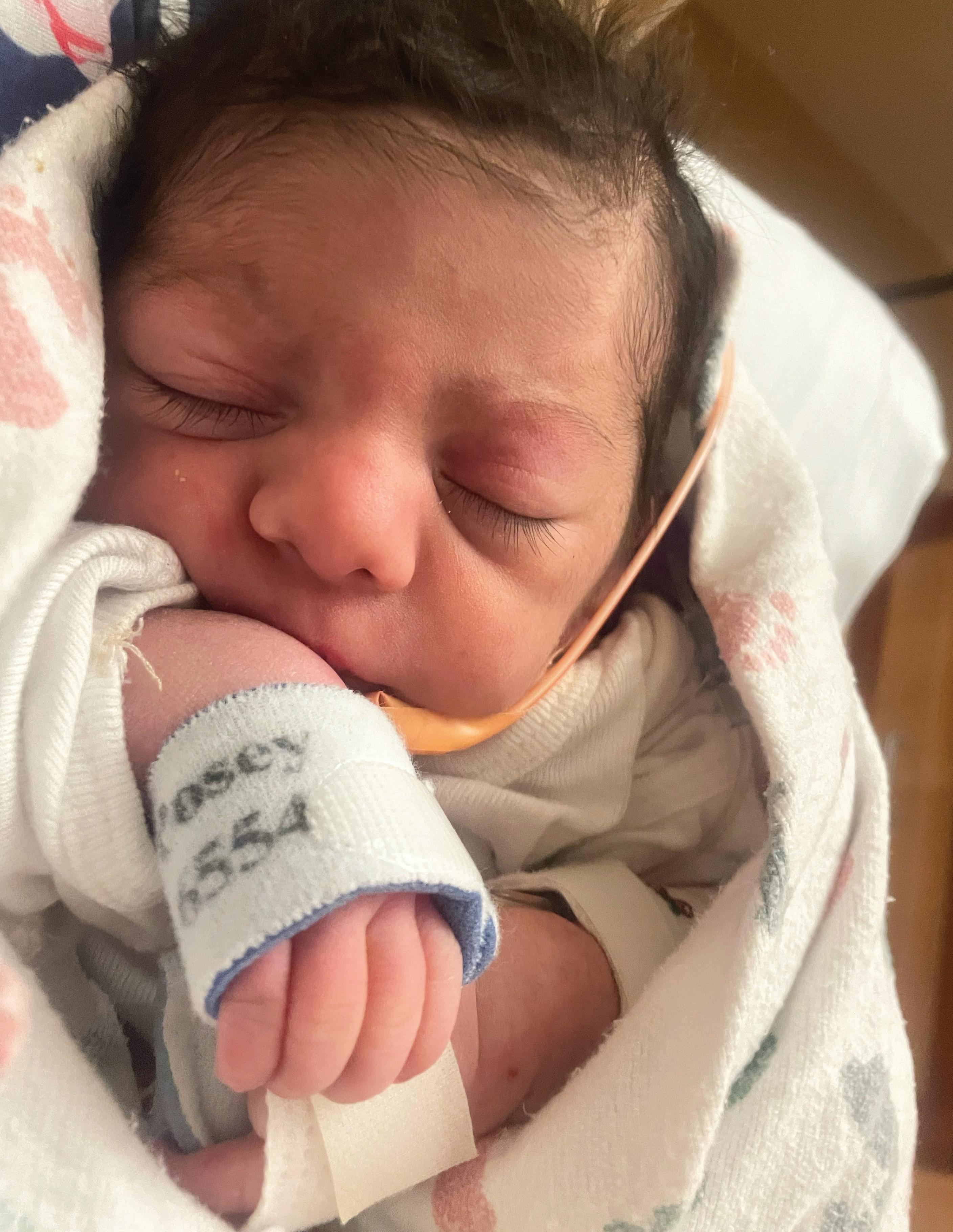
With the findings of the assessment and recommendations from the Steering Committee, we will convene key staff personnel over the next several months and move forward in developing an implementation plan. This plan, adopted by The Children’s Home, will ultimately be determined by the capacity of the organization and the focus areas most in line with our mission and strategic goals.
In accordance with the IRS standards, we will complete this final step on or before the 15th day of the fifth month after the end of the taxable year in which the hospital facility finishes conducting the CHNA.



5.1 The Children’s Home 2023 Annual Report
5.2 US Census Bureau Quick Facts
5.3 Plan for a Healthier Allegheny 2023-2027
2023


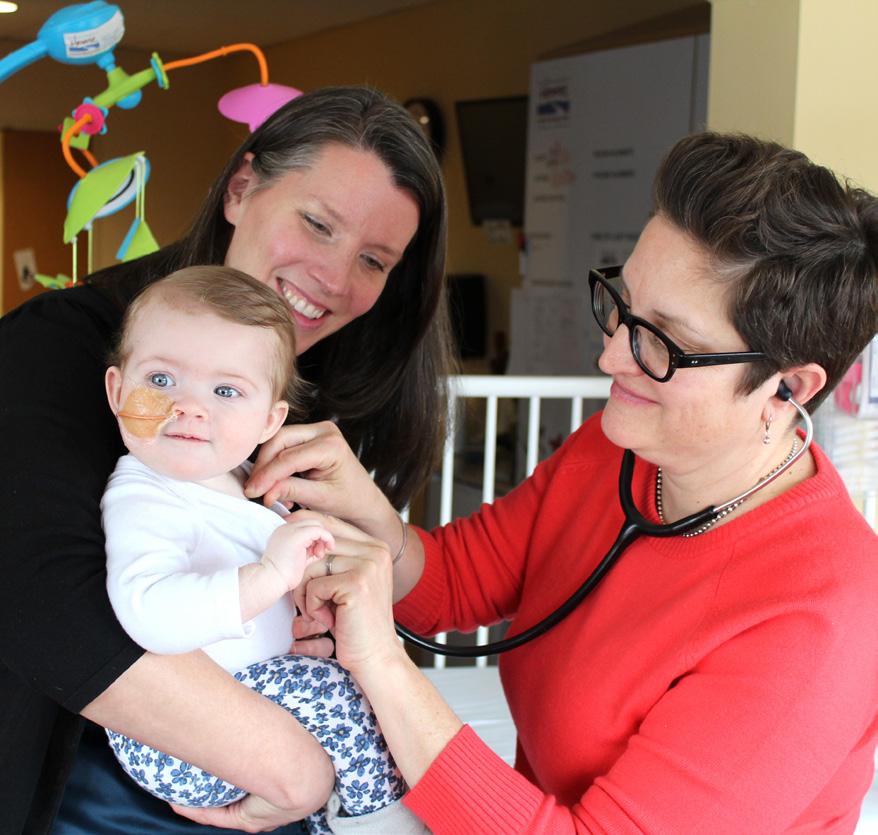
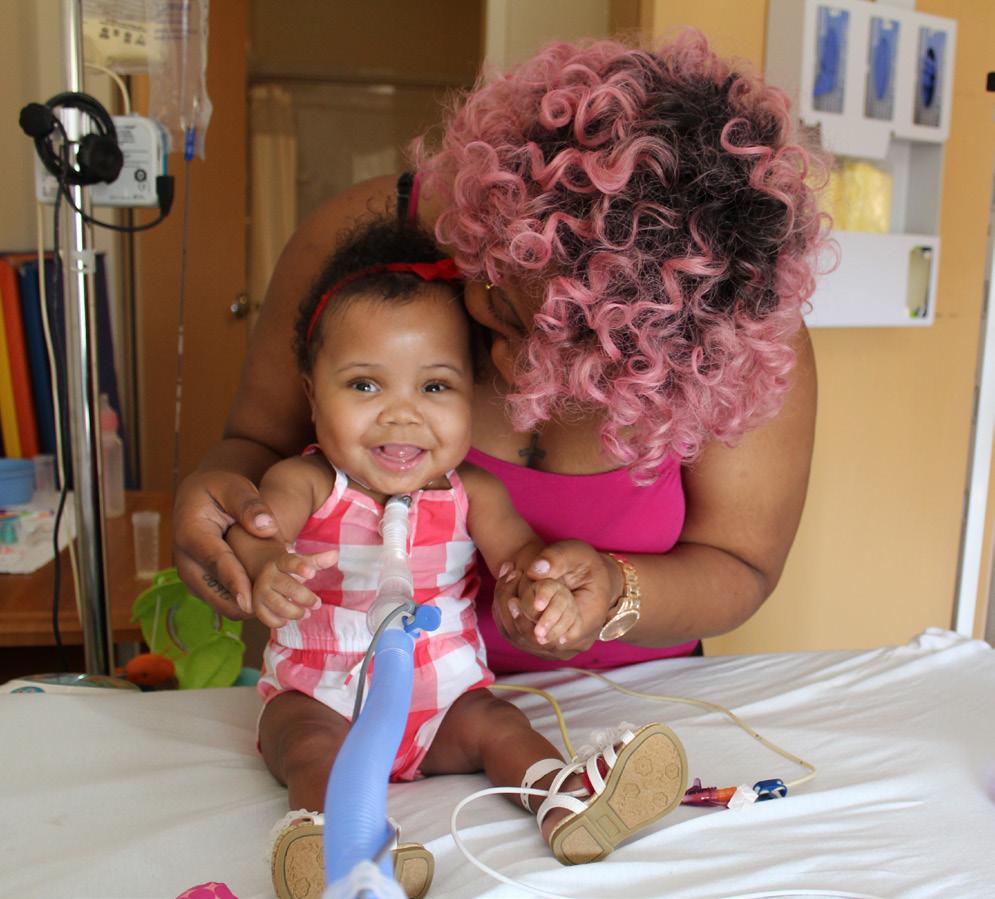

Letter from Pamela Keen
Board of Directors
Mission Statement and Programs
The Five Percent
Lucy’s Story
Pediatric Specialty Hospital
Holland’s Story
Child’s Way
Logan’s Story
Pediatric VIEW
Amara’s Story
Therapy Services
Adalay’s Story

When you look at everything that The Children’s Home of Pittsburgh has accomplished in the last year, it’s easy to forget the minute details of the everyday. Holding hands and walking down the hallway with one of our Pediatric Specialty Hospital toddlers. Playing ball with the University of Pittsburgh football players in Child’s Way. Watching a child with cortical visual impairment transform from a passive patient to an independent teenager.
These moments make every statistic, chart, and graph real and tangible, a living reminder of the most precious children and families who need our help.
I’m delighted for you to read our families’ stories that accompany our programs and services. Every penny raised supports our efforts to establish, empower and strengthen them in their journey. Lucy Montenary, the “charming and strong willed” child on the cover of this annual report, will celebrate her eighth birthday this year. Diagnosed with Trisomy 18 and a congenital heart disease prenatally, 95% of children like her die before they turn one. Lucy, however, plays with her older sisters on our adaptive outdoor playground and imagines a world of unicorns and magic. She “beat the odds” and continues to thrive.
We see so many children like Lucy come through our doors. Their families, scared and confused, leave here together, confident and proud.
Through enhanced counseling, therapy, and the establishment of early intervention programs, we continue to provide comprehensive care. The expansion of services at The Children’s Home & Lemieux Family Center reflects a vision of independence and growth, ensuring that every child and family receives the support they need to flourish.
So thank you. Thank you for your support. Thank you for your advocacy. Thank you for your investment in us and in them.
Pamela R. Keen Pamela R. Keen, Chief Executive Officer
Officers
President Theresa L. Heck
Vice President Amy Bass
Secretary Emily Landerman-Goldberg
Treasurer Julie Kline
The Children’s Home Leadership Team
Pamela R. Keen
Chief Executive Officer pkeen@chomepgh.org
Bethany Bartilson Program Relations Manager bbartilson@chomepgh.org
Beverly Brown, MD Medical Director/Hospitalist bbrown@chomepgh.org
Board Members
Newlin Archinal
Beverly Brown, M.D.
Stephanie Churchel
Ranny Ferguson
Allison Howard
Aditi Kinkhabwala
Michael McCarren
Claire McGee
Sandra Hawkins Miller
Mark Place
Julia Taylor
Marjorie Weiner
Geil Wesley Williams
Barbara E. Zawadzki, M.D.
Stacy Schesler Chief Operating Officer sschesler@chomepgh.org
C. Renee Gwin
Director of Therapy Services rgwin@chomepgh.org
Lisa Houlihan Chief Nursing Officer Lhoulihan@chomepgh.org
Kim Phillips Chief Financial Officer kphillips@chomepgh.org
Christine Roman-Lantzy, Ph.D. Pediatric VIEW Program Director croman@chomepgh.org
Erika G. Schmitt Director of Counseling and Family Support Services eschmitt@chomepgh.org
The Children’s Home of Pittsburgh & Lemieux Family Center, established in 1893, is an independent, nonprofit organization with a mission to promote the health and well-being of infants and children through services that establish and strengthen the family.
Our Pediatric Specialty Hospital transitions medically fragile children home safely. Child’s Way daycare promotes clinicians and teachers who support children with health complexities. Our Adoption & Permanency staff works with children in foster care, birthparents, and adoptive families. World-renowned Pediatric VIEW focuses on pediatric cortical visual impairment. Our Counseling services address growing mental health needs. Specialized Therapy prioritizes cohesive, comprehensive treatment.
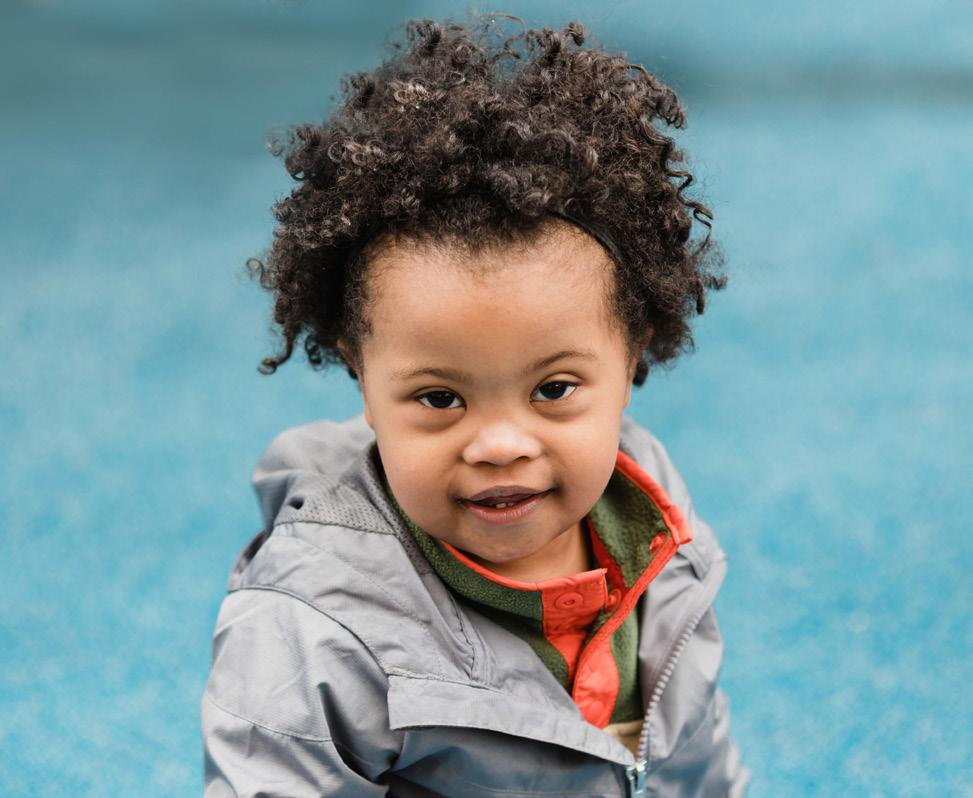


Our daughter, Lucy Alice Montenary, was diagnosed with Trisomy 18 and congenital heart disease prenatally in 2016. Trisomy 18 is a rare chromosomal condition and is usually fatal. Postnatally, 60% of children die within 2 months and more than 95% within a year.
I am honored to say that Lucy turned 7 years old last September.
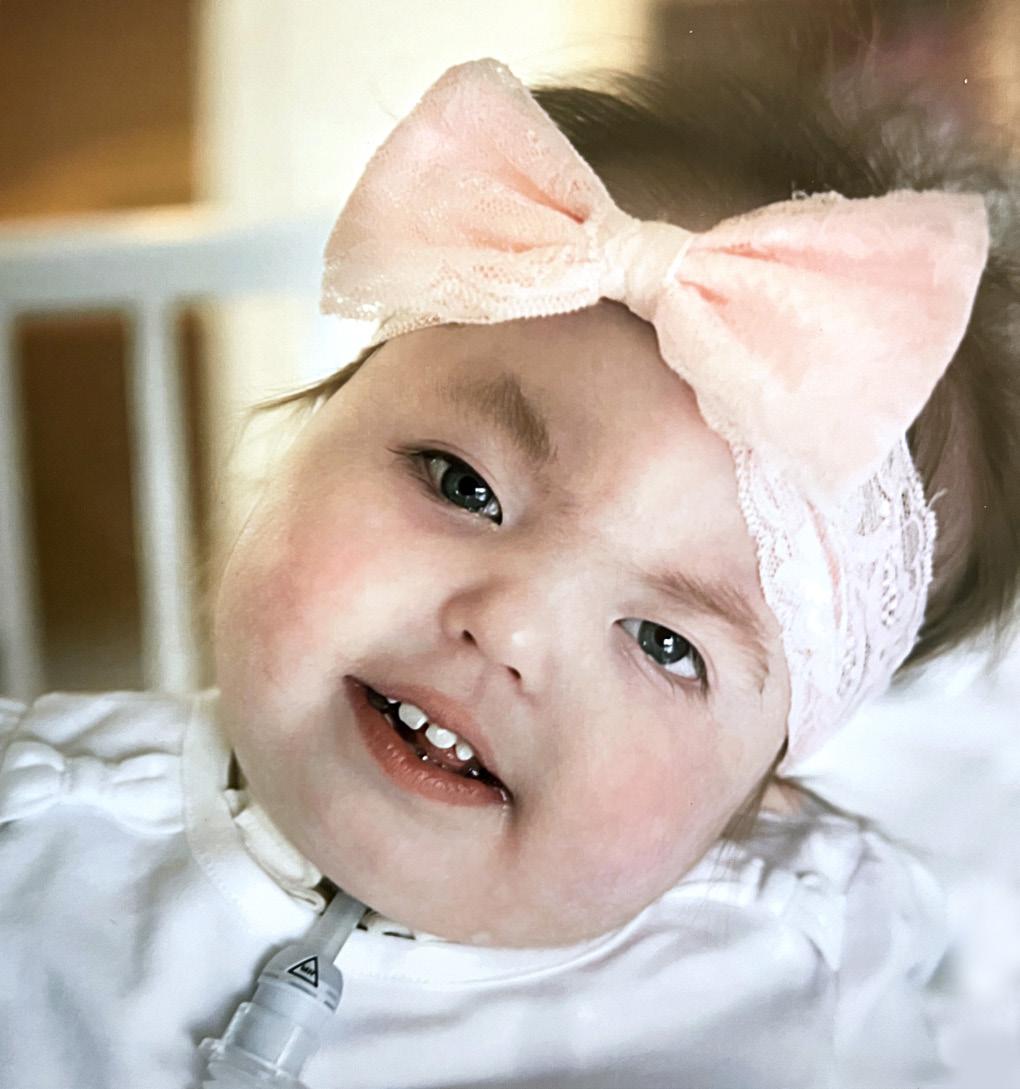
She is the mere 5% who beat the odds of survival. I can say with certainty that was due to the medical, physical, and social support Lucy has received from The Children’s Hospital of Pittsburgh & Lemieux Family Center.

December 20th, 2016 was Lucy’s first day at The Children’s Home and our family’s first experience being there. She was only 28 days old. I refer to The Children’s Home as our “second home,” because that is exactly how the staff and the environment feel there They have been our safe haven, our indispensable peace of mind, and we offer our endless gratitude to them.
Lucy is the youngest of four sisters. Everyone that meets her gloats how much of a pleasure it is to care for her. She is extremely charming and strong willed, has a contagious smile, is very lovable, and admires unicorns and all things magical. She has an immense personality that shines so brightly; she is truly an extraordinary and remarkable person.
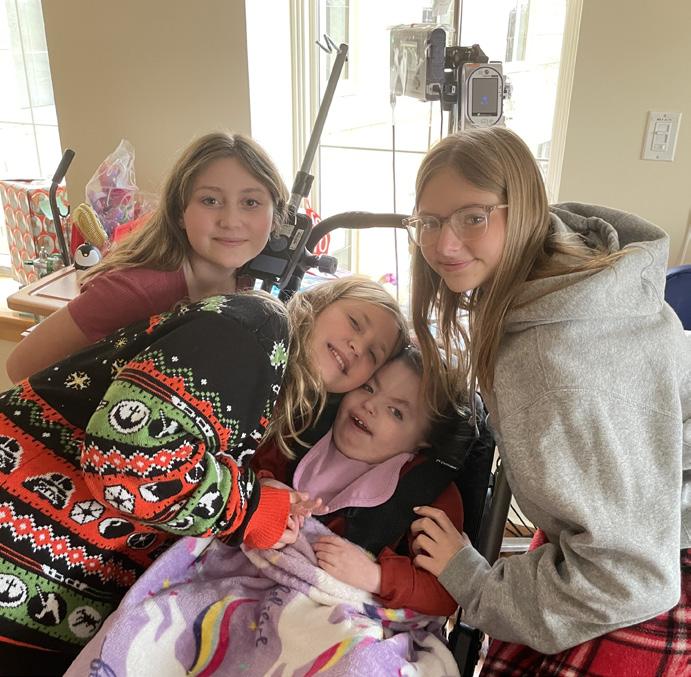
The Children’s Home has impacted my life in many positive ways. The staff continues to bring empathy, acceptance, and inclusion to our family’s lives. Lucy’s sisters have been included in their sister’s care since day one; they have been able to interact and play not

only in her room but outside of her room with Lucy. There seems to be no limitation to what Lucy can do. We have access to the outdoor playground [in Child’s Way], and they have opportunities to engage in plenty of meaningful experiences.
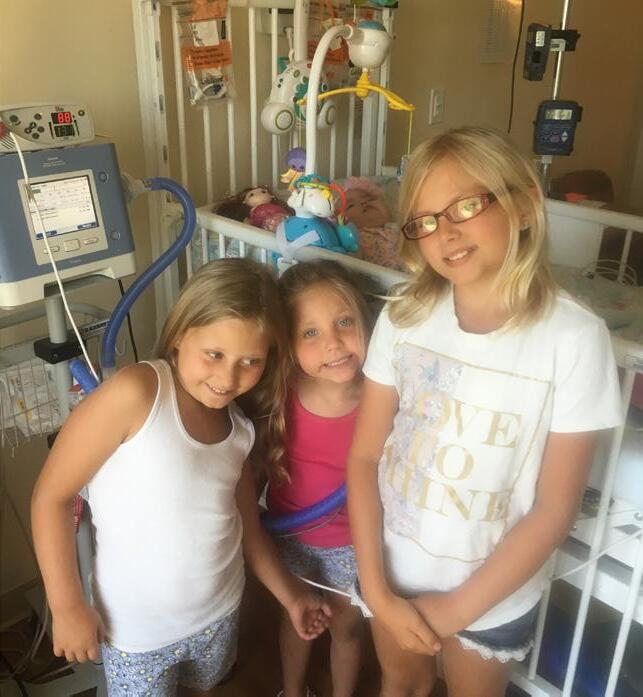
Lucy’s sisters gained an increased capacity for empathy and a greater tolerance for individual differences at such a young age. The Children’s Home has created a safe environment for siblings of children with medical needs and a place to call their own. I recall a significant memory – I had to perform my first emergency tracheotomy change on Lucy. I was worried about how I was going to manage my other three daughters, all under the age of 10 years old. The staff had visitors dressed as princesses that day, and they played with my daughters while I did something so frightening.
I remember feeling focused and relaxed, because I knew they were happy, safe, and entertained.
- Lucy’s momma







The nurses taught me an abundance of knowledge pertaining to nursing, which helped me gain the confidence to understand my capability, and think critically for Lucy’s medical needs. The staff improved Lucy’s wellbeing and she thrived tremendously over the years physically, socially and emotionally. I will always have immense appreciation for the Children’s Home for their patience, understanding and dedication to our family for the trust, bond and memories we have made together.
– Allison, Lucy’s Mom

Find Lucy’s Story on Our Website
Our 30-bed Pediatric Specialty Hospital provides familycentered care in a home-like atmosphere. Serving children from birth to age 21, we help patients transition between a tertiary care hospital and home. Nurses and support staff provide family members with individualized education and skills training on how to care for their child’s medical needs after discharge. Furthering this unique model of care is the Lemieux Family Center, where families can stay on-site for free and practice their new care-giving skills in a homelike environment.
The nurse-to-patient ratio Is low, so staff can teach hands-on care. Most days you will find nurses, PCTs, nurse practitioners, and physicians building confidence and certainty. Our clinical care is comfortable and relaxed.


5,522
TOTAL NUMBER OF PATIENT DAYS
415
TOTAL NUMBER OF PATIENTS
30
AVERAGE LENGTH OF STAY (IN DAYS)
0
NUMBER OF FAMILIES WHO RECEIVED A MEDICAL BILL



Having been at Child’s Way for nearly three years, Holland has become somewhat of a mayor there. He excitedly welcomes visitors, loves spending time with his peers, and adores the staff that works there. We know that he would not have been able to flourish in this way in another child care setting, and that the individualized and highly skilled care he receives is critical to his stability, development, and advancement.
– Jennifer, Holland’s Mom
Find Holland’s Story on our Website
At Child’s way, we offer preschool, daycare, and beforeand-after-school care for medically fragile children, age birth to age 21. The first program of its kind in Pennsylvania, we opened Child’s Way in May 1998 and have since served more than 500 children and their families. Child’s Way is a dually licensed Pediatric Extended Care Center and 4 out of 4 Keystone STARS accredited program that is designed for working families as a supplement or alternative to inhome nursing.
Through Child’s Way, we offer on-site services, including fixing and fitting adaptive equipment. Our inclusive program costs $40 per day, with scholarships and financial aid available to families in need.

6,399
TOTAL NUMBER OF STUDENT DAYS
251
TOTAL NUMBER OF OPERATING DAYS
26 AVERAGE DAILY CENSUS
14
NEW STUDENTS





Her (Christine’s) CVI range assessments have helped me advocate for vision services as well as tailor his (Logan’s) private therapies to his unique needs based on his range score. Logan has made considerable progress in ALL areas and this could not have been accomplished without Dr. Roman-Lantzy’s help!
– Barbara, Logan’s Mom

Find Logan’s Story on our Website
This initiative treats patients with cortical visual impairment (CVI), a visual disfunction that occurs within the brain, not the eye. Within Pediatric VIEW, patients receive the tools they need to positively experience the world around them and identify objects they see in everyday life. We focus on our core mission of CVI awareness, early identification advocacy and education.
Pediatric VIEW began in the 1990s as an extension of NICU follow-up programs in a Pittsburgh-based hospital. It has been continually administered by Dr. Christine Roman-Lantzy, growing from a local program to one that serves families nationally. During the 30 years that this program has been in existence, it has positively impacted the lives of more than 2,500 neonates and pediatric patients who have experienced birth-related trauma.
1,012 CONSULTATIONS
150 INDIVIDUAL SERVICE SESSIONS
15 COUNTRIES SERVED
315 SCHOOL SUPPORT MEETINGS
10 PROFESSIONAL CONFERENCES AND SPEAKING ENGAGEMENTS




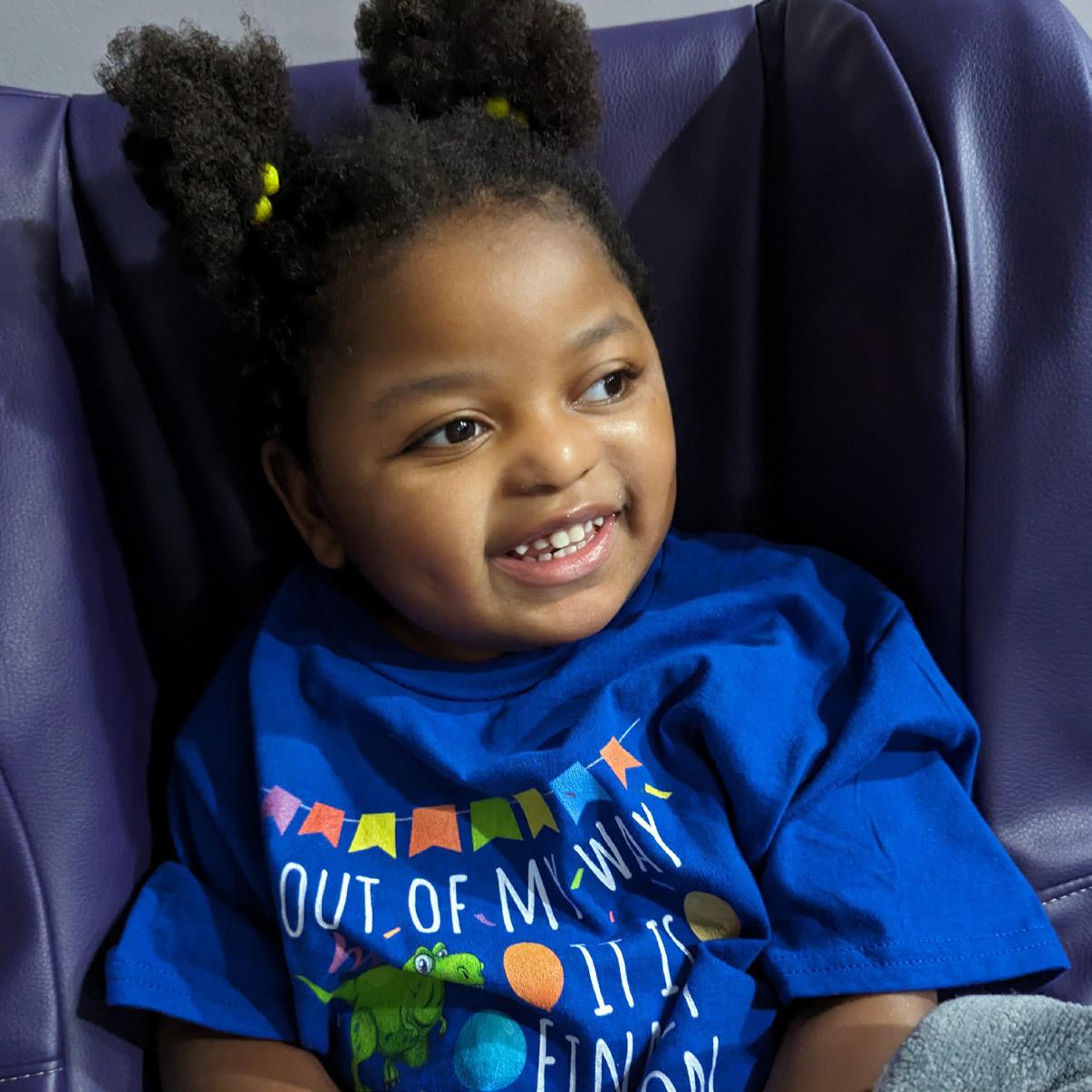
She absolutely loves school and has grown, developed, and exceeded doctor’s expectations for her by leaps and bounds. She’s always doing something new and we credit that to the teachers, nurses, and therapists that have worked with her since she was an infant. Her therapists have always had open communication with us and given us so many tools and suggestions of a variety of things to do to continue to help Amara learn new skills and build upon her strengths.
– Caitlin, Amara’s Mom
We have created a cohesive continuum of care for children, where our therapists, teachers and nurses work together with families to optimize a child’s individualized plan and progress. Services include occupational, physical, feeding, speech, developmental, and vision therapy and can be administered inpatient, outpatient, or through early intervention.
We specialize in complex swallowing, CVI, seating and mobility, sensory integration, splitting and casting, augmentation communication, and assistive technology.
Our philosophy is based on our belief that a child’s family is key to success at home. Our atmosphere promotes open communication, honors cultural diversity and family tradition, and utilizes individual plan of care that focuses on flexible schedules and education methods to allow for optimal family participation. Our team of therapists work with our patients daily to optimize patient outcomes and family success.
BEGAN IN JUNE
2023
3 SERVICESPEDIATRIC INPATIENT, OUTPATIENT, AND EARLY INTERVENTION THERAPY
6 SPECIALTIES –PHYSICAL, OCCUPATIONAL, SPEECH, DEVELOPMENTAL, VISION, AND FEEDING THERAPY
9




There were many challenges along the way, including adjusting to the transition of bringing Adalay into our family and working through the logistical hurdles of adoption, but we got the support we needed from Erika and the Children’s Home every step of the way. The two years that we have had Adalay have enriched our lives in so many ways. We love to see her learn, grow, and giggle like crazy with her new sisters. We are so happy to have her, and feel that our family is finally complete.

– Jennifer and Chris, Adalay’s Parents
Through our Through our Adoption & Permanency program, we have placed more than 7,000 children in permanent, loving homes since our establishment in 1893. Our staff facilitates all stages of the adoption process, providing a lifetime of support. We are also a Statewide Adoption and Permanency Network (SWAN) affiliate. SWAN services help children in the custody of Children, Youth and Family service agencies to prepare for and achieve permanency.
By expanding our Counseling services and then accepting the insurance coverage that our foster children and families have, we can now serve our foster youth internally to ensure they receive the counseling they need as soon as possible. Our existing and future families can now receive any counseling needs, rather than having to be referred elsewhere, creating a holistic culture of healing and help.
105
INDIVIDUAL COUNSELING APPOINTMENTS
25
BIRTHPARENT SUPPORT GROUP ATTENDANCE
87
ADOPTIVE FAMILY SUPPORT GROUP ATTENDANCE
15 TEEN SUPPORT GROUP ATTENDANCE







Our volunteers are kindhearted, helpful, and compassionate. They are a wonderful group of people who we are lucky to have as a part of our team and accumulated 800 hours of service in 2023. That’s more than $25,000 of in-kind support and dedication to our children and families.
We are thrilled to have our volunteers back in the building. As we continue to monitor the needs of our children and families and national health and safety trends, we have reintroduced volunteers slowly, but surely.
Also, we have expanded our volunteer opportunities to include pet therapy, ambassadors, boutique, handyperson, administrative tasks, special events, and social media, in addition to helping in the Pediatric Specialty Hospital and Child’s Way daycare.

If you are interested in becoming a regular volunteer at The Children’s Home, please fill out this inquiry form to be added to our waitlist:



TOTAL VOLUNTEER HOURS
1. Peter Sukernek – 130
David Keen – 101
Carol Ranallo – 62
VOLUNTEER GROUPS
BNY Mellon
Dawood
VOLUNTEER INQUIRIES
FedEx Cares
Gateway High School
Pittsburgh Steelers
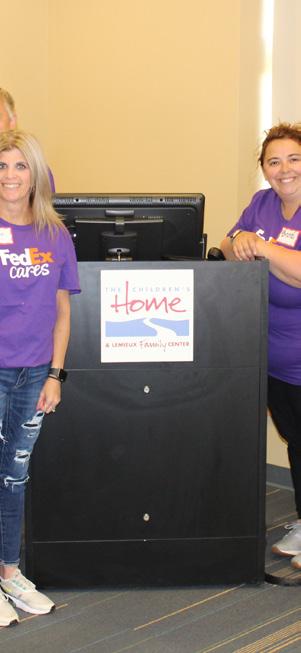
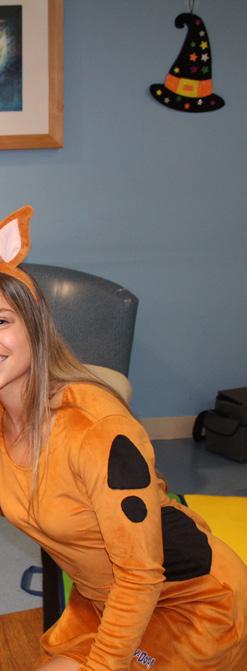
PJ Dick Trumbull & Lindy
PNC Grow Up Great Salesforce
University of Pittsburgh Athletics
VOLUNTEER GROUP DONATIONS
BNY Mellon - $3,625
PET THERAPY VISITS
42 VOLUNTEERS FOR ANNUAL GALA 15
Gateway School District Chick Fil A Leader Academy – staff lunches and toys ($1,000 value)
PJ Dick Trumbull & Lindy –Toy and clothes ($500 value)
Salesforces - $1,000

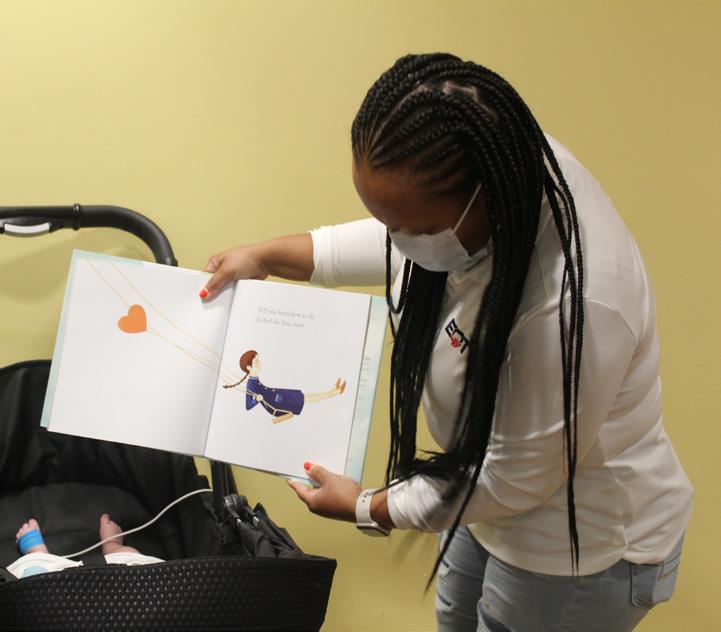
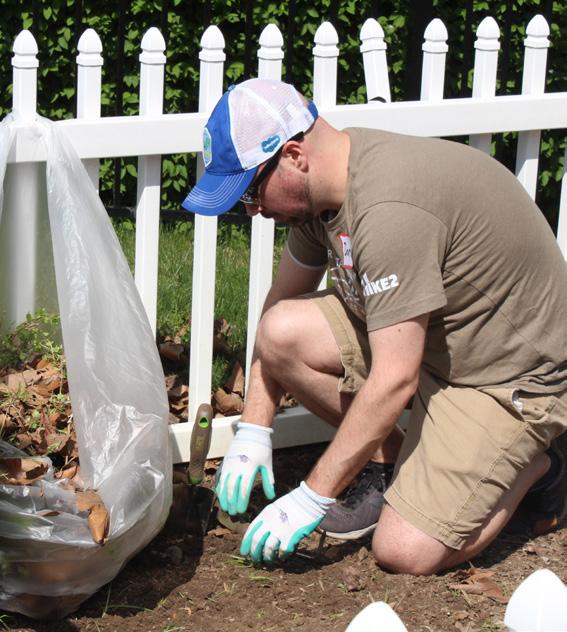
Medical Assistance reimbursement
Commercial patients payment
Medicaid Moderization funding
Donations/Grants/Gov Funding
Adoption fee for service
Other
Pediatric View fee for service
$7,866,575
$2,862,333
$1,886,767
$1,743,851
$932,506
$628,738
$118,608
2,762
507
4 Rivers Wealth Management
84 Lumber Company
A.J. and Sigismunda Palumbo
Charitable Trust
Academy of Adoption & Assisted Reproduction Attorneys, Inc.
Adorn Fine Handmade Jewelry
Aestique Plastic Surgery & MediSpa
Alla Famiglia
Allure Hair Design
Alternate Histories
Amanda Lee Glassware
AmazonSmile Foundation
American Association of Drilling Engineers
Ameriserv Financial Bank
Ann & Frank Cahouet Foundation
Anna Bauman Photography
AR Workshop Robinson
Arsenal Bowling Lanes
ASCEND Pittsburgh
Ascent Data
Assemble Pittsburgh
Aveanna Healthcare
Bantha Tea Bar
Bark & Gold Photography
BAYADA
Bayer U.S. LLC
Beacon Capital Partners LLC
Benevity Community Impact Fund
Bethel Bakery
Bethel Park Stable & DHT
BHE GT&S LLC
big burrito Restaurant Group
Blackburn’s Physicians Pharmacy
BNY Mellon
Board and Brush
Board of Public Education of Pitt
Bognar and Company
Bonterra Tech
Bridenbaugh Memorial
Bright Funds Foundation
Burn Brothers Candles Co
Cafe Conmigo
Caliente
Candylab Toys
Caruso Hair & Esthetics
CB Face Bar
Center Theatre Players
CentiMark Foundation
Chop, WOK & Talk!
Christopher’s Kitchen
City Squeakers LLC.
CleanCare
Club Pilates
Comcast
Complete Mortgage Closing Solutions, LLC
Concordia Lutheran Ministries of Pittsburgh
Constantin Imhoff Fund
Country Hammer Moonshine
CPSI
Crayola Experience Easton
Creature Art Gallery
David Alan Clothing
Dean A. Ponterio, CPA & Financial Services
Deborah A Gray Enterprises Inc
Deer Creek Winery and Watson
Estate B&B
DelGrosso’s Amusement Park
Delmont Lions Club Foundation
Dependable Drive In
DeSH & Co
Diakon-LLC
DiAnoia’s Eatery
Donghia Bros Lumber Co Inc
Don’s Appliances
Dots & Doodles
DoubleTree by HiltonPittsburgh Cranberry
DRAW Collective
DSF Charitable Foundation
Duck Donuts Pittsburgh
Duolingo
Duquesne University School of Nursing
Early Learning Resource Center for Region 5
Easley & Rivers, Inc.
East End Food Co-Op
Easter for Eli
Eat’n Park
EmTree Bath and Body
Erie Zoological Society
Erika Blair
Escape Room Pittsburgh
Ethan Allen
FedEx Ground
Fidelity Charitable Gift Fund
Fired Up
First Commonwealth Advisors
Fleet Feet
FOF Golf Association, Inc.
Freckled Flower Photography
Frontstream (Truist)
Fun Fore All
Fun Slides Carpet Skatepark
Gap Foundation
Gateway Senior High School
GBU Life
Gidas Flowers
Give Lively Foundation
Grable Foundation
Grove Avenue Design
Hahn Nursery
Halycon Salon
Ham and Cheese Photos
Hand and Stone
Harvest Valley Farms
HDR Engineering, Inc.
Health Direct Pharmacy
hGrace Confections llc
Highmark Blue Cross Blue Shield
Hofbrauhaus Pittsburgh
Hoffman Electric, Inc.
Hospital & Healthsystem Assoc. of PA (HAP)
HUB International
iHeart Media
Indulge Beauty Bar
Interim Healthcare
J. Christopher and Ann C. Donahue
Charitable Fund
Jack Buncher Foundation
Jameson’s Army
JCPenney Communities Foundation
Jennie K. Scaife Charitable Foundation
Jewish Federation of Greater Pittsburgh
Jim Shorkey Auto Group
Jo June
Katie Dean Jewelry
Katy Lynn Pottery
Keller Williams
Kendra Scott
KeyBank Foundation
Keystone Building Inspections
Kimpton Hotel Monaco Pittsburgh
Konica Minolta Business Solutions USA
Kristin Merck Photography
La Gourmandine, LLC
La Vigneta Winery
Lamar Advertising
Larrimor’s
Laser Storm Pittsburgh
LeMont Restaurant
Linda and Ben Fisher Fund
Lineage Logistics
Lisa A. Heinz Fund
Liv By The Stitch
Living Treasures
Los Sabrosos Dance Company
Maria S Allshouse LLC
Mario Lemieux Foundation
Marissa’s Cause Inc
Martha Mack Lewis Foundation
Mason’s Movement Foundation
McCune Foundation
McKamish Inc.
Mechanical Contractors Association of WPA
Mediterra Cafe
Meyer, Unkovic & Scott LLP
Micah Made Cookies
Mightycause Charitable Foundation
Milton G. Hulme Charitable Foundation
Mountaineer Casino
Myers, Moidel, Taylor P.C.
N. David & Janet M. Campbell
Family Foundation
Narcisi Winery
Nemacolin
Network for Good (Facebook)
North Pittsburgh Oral Surgery
North Shore Tavern
Nota Bene Fine Paper Boutique
Nothing Bundt Cakes
NV5 Tech and Acoustics
Omni William Penn Hotel
Onehope
Orr’s Jewelers
Oxford Athletic Club
PA Emergency Management Agency
Party Rockers PGH
Pasta Too
Paypal Giving Fund
Penn Brewery
Peterry Charitable Foundation
Phipps Conservatory and Botanical Gardens
Pitt Ohio Nurses Association
Pittsburgh Foundation
Pittsburgh Opera
Pittsburgh Penguins Foundation
Pittsburgh Pirates
Pittsburgh Riverhounds
Pittsburgh Steelers
Pittsburgh Symphony Orchestra
Pittsburgh Zoo & Aquarium
PJ Dick Trumbull & Lindy
PNC Financial Services Group
PNC Foundation
PPG Foundation
Premier Wealth Partners
Pressing On
Pro Football Hall of Fame
Project Linus
PromoWest
Protohaven
Rachel Robbins Photography
Raff Printing, Inc.
Ripepi Winery & Vinyard Manager
Rite Aid Foundation KidCents
Rivers of Steel
Robert Waters Fund
Roesch Family Charitable Trust
Romp n’Roll Pittsburgh
Roy A. Hunt Foundation
Russell Standard Corporation
Ryan Memorial Foundation
Saint Aidan Parish
Salon Rena
Salty Paws Pittsburgh
Sarris Candies
Scent with Love
Schwab Charitable Fund
Science Center
Scott Enterprises
Senator John Heinz History Center
Senseless
Serenity Home Services LLC
Shadyside Presbyterian Church
Sherwin Williams
Sherwood Glassworks
Shooters Golf
Simpson McCrady LLC
Sognatore Salon
Soldiers and Sailors Memorial Hall and Museum
Splash Lagon Indoor Water Park Resort
Spoonwood Brewing Company
Squiggle Art
Staunton Farm Foundation
Steel City Collectibles
Steel City Gamerz
Steel Goat Marketplace
Steelers Hall of Honor Museum
Steven E & Gail S Burke Foundation
Steve’s Air
Stockton Mortgage
Strasburg Scooter Tours
Strasburgh Scooters
Strassburger, McKenna, Gutnick, & Gefsky
STRIDE Fitness
Sugar Pop Press
Sun Energy Services LLC
Sweat Pittsburgh
Sweetwater Center for the Arts
Syzygy Scents
Target - Cranberry Township
Target - Downtown Pittsburgh
Target - East Liberty
Tennis Village
Tequila Cowboy
The Chocolate Moose
The Hydro Jug
The Izzie Fund
The Life Potion
The Milkshake Factory
Thomas Marshall Foundation
Thunderdome Restaurant Group
Tippins Foundation
Touchstone Crystal
Trader Joe’s East Liberty
Trax Farm
Truly Scrumptious Sweets & Treats
Turned Turquoise Jewelry
U.S. Bank Foundation
United Way of Greater Atlanta
United Way of Northeast Florida
United Way of Southwestern PA
University of Pittsburgh Dept. of Athletics
UPMC Children’s Hospital of Pittsburgh
UPMC Magee Women’s Hospital
UPMC Presbyterian Shadyside
UpScaleIt
Vanguard Charitable
Victorian Finance LLC
Vision Board
W W Rearick Company, Inc.
W. I. Patterson Charitable Fund
Waffles INCaffeinated
Walk The Burgh Tours
Washington County Community Foundation
Washington Financial Charitable Foundation
Washington Wild Things
WiesnerMedia LLC
Wigle Whiskey
Winked Studio
Wood-N-You Like IT
WQED Pittsburgh
Zachary’s Mission
Zone 28

AlleghenyCounty,Pennsylvania
QuickFactsprovidesstatisticsforallstatesandcounties.Alsoforcitiesandtownswitha population of 5,000 or more.
estimates,July1,2023,(V2023)
estimates,July1,2023,(V2023)
Estimates,July1,2022,(V2022)
percentchange-April1,2020(estimatesbase)toJuly1,2023,(V2023)
percentchange-April1,2020(estimatesbase)toJuly1,2022,(V2022)
AlleghenyCounty, Pennsylvania
ValueNotes
Methodologydifferencesmayexistbetweendatasources,andsoestimatesfromdifferentsourcesarenotcomparable.
Someestimatespresentedherecomefromsampledata,andthushavesamplingerrorsthatmayrendersomeapparentdifferencesbetweengeographiesstatisticallyindistinguishable.ClicktheQuickInfo icontotheleftofeachrowinTABLEviewto learnaboutsamplingerror.
Thevintageyear(e.g.,V2023)referstothefinalyearoftheseries(2020thru2023).Differentvintageyearsofestimatesarenotcomparable.
Usersshouldexercisecautionwhencomparing2018-2022ACS5-yearestimatestootherACSestimates.Formoreinformation,pleasevisitthe20225-yearACSComparisonGuidancepage.
FactNotes
(a) Includespersonsreportingonlyonerace
(c) EconomicCensus-PuertoRicodataarenotcomparabletoU.S.EconomicCensusdata
(b) Hispanicsmaybeofanyrace,soalsoareincludedinapplicableracecategories
ValueFlags
- Eithernoortoofewsampleobservationswereavailabletocomputeanestimate,oraratioofmedianscannotbecalculatedbecauseoneorbothofthemedianestimatesfallsinthelowestorupperintervalofanopenendeddistribution.
F Fewerthan25firms
D Suppressedtoavoiddisclosureofconfidentialinformation
N Dataforthisgeographicareacannotbedisplayedbecausethenumberofsamplecasesistoosmall.
FN Footnoteonthisiteminplaceofdata
X Notapplicable
S Suppressed;doesnotmeetpublicationstandards
NA Notavailable
Z Valuegreaterthanzerobutlessthanhalfunitofmeasureshown
QuickFactsdataarederivedfrom:PopulationEstimates,AmericanCommunitySurvey,CensusofPopulationandHousing,CurrentPopulationSurvey,SmallAreaHealthInsuranceEstimates,SmallAreaIncomeandPovertyEstimates,StateandCounty HousingUnitEstimates,CountyBusinessPatterns,NonemployerStatistics,EconomicCensus,SurveyofBusinessOwners,BuildingPermits.





Healthy people in healthy communities ACHD Mission
Protect, promote, and preserve the health and well-being of all Allegheny County residents, particularly the most vulnerable.

Goal for Plan for a Healthier Allegheny 2023-2027
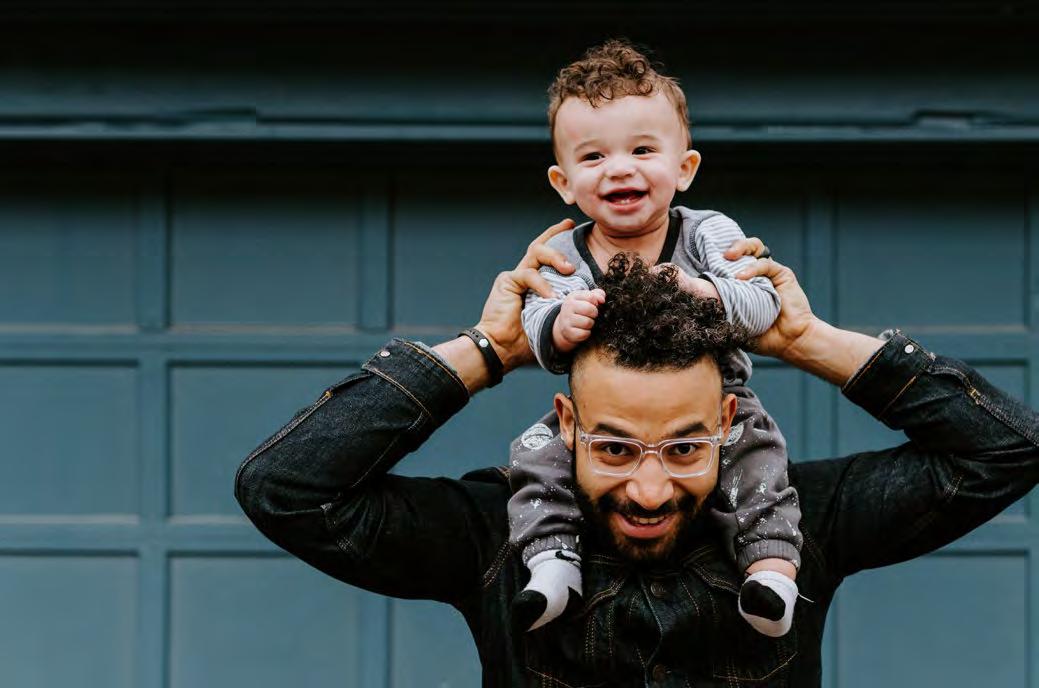
Allegheny County residents lead healthy lives as demonstrated by their physical and behavioral health and the environments in which they live, learn, work, and play.
Equity Driven
Everyone deserves a chance to lead a healthy life regardless of who they are or where they live.
Community Engaged
Public health information is made available to everyone.
Actions based on research and established best practices.
Strengthen infrastructure and policy that improve health and safety where residents live, learn, work and play.


Every five years, the Allegheny County Health Department (ACHD) engages the community in an assessment and the development of a plan to improve the health of residents. The resulting document is our community health improvement plan, which we call Plan for a Healthier Allegheny 2023-27. The plan prioritizes issues identified by residents from the 2019 and 2021 community health surveys and in the 2022 Community Health Assessment. The purpose is to establish goals and objectives for improving health outcomes, and metrics for evaluating progress. At the same time, the plan identifies strategies, lead county agencies, and the organizations that are currently, or could contribute to the advancement of the health of our community.
The Health Department developed the Plan for a Healthier Allegheny 2023-27 by engaging the community and responding to their priorities. The plan required goals and objectives that were specific, measurable, relevant and time-bound. The plan needed to be data-supported, equitydriven, policy-oriented and community-engaged.
The plan’s foundation is the 2022 Community Health Assessment, which the ACHD began developing in 2019 when it launched a survey to gather information from residents about their priorities. More than 4,000 residents responded by identifying the issues that mattered most to them. Because of the COVID-19 pandemic, the ACHD postponed further work on the plan until mid-2021. By then, it was clear that conditions had changed. To assess the difference and understand how the pandemic had affected the priorities of residents, the ACHD fielded a supplemental survey in 2021, to which more than 2,000 people responded.
Concurrently, ACHD staff compiled data about the health of the county’s residents, focusing on priority areas identified in the 2017 Plan for a Healthier Allegheny: access, chronic disease health risk behaviors, environment, maternal and child health, and mental health and substance use. The data were examined to identify populations that are at increased risk of poor health outcomes, as well as areas where better information is needed.
In the summer of 2022, with all the data compiled, the ACHD hosted virtual listening sessions for stakeholders. Throughout the meetings, residents shared health concerns, highlighted community health risks and outcomes, and identified areas of improvement. Sessions focused on chronic disease and prevention, environmental health, overdose prevention, family and child health, and violence prevention. In all, the ACHD engaged 245 residents. At the same time, the ACHD offered and promoted a survey that allowed people unable to attend the sessions to provide feedback. More than 400 residents responded. The department also conferred with many organizations working in these fields and partner agencies in county government.
The 2022 Community Health Assessment, engagement with stakeholders, feedback received from the listening sessions, and surveys served as guideposts for creating the Plan for a Healthier Allegheny 2023-27. The resulting draft plan had eight goals, 37 objectives, and 59 metrics. In the fall of 2022, the draft plan was shared with the same organizations and individuals who had participated in the surveys and listening sessions. The ACHD received robust feedback from nearly 200 individuals and incorporated many suggested changes into the final plan.
Plan for a Healthier Allegheny 2023-27 has three priority areas: physical health, behavioral health, and the environment. For each area, there is one overarching goal with a set of supporting goals. The overarching goal has one metric that will be used for evaluating progress. For each subordinate goal, there are multiple objectives, each of which is tied to one or more metrics for evaluation. In addition, potential or actionable strategies have been identified. This list is meant to be suggestive, rather than exhaustive. For each priority area, the ACHD has identified a lead county agency that will help coordinate the communication of the plan, the gathering of data, and the reporting of progress.
Overarching Goal:
Allegheny County residents live healthy lives as demonstrated by their physical and behavioral health and the environments in which they live, learn, work and play.
Summary of Priority Goals
Physical Health Goals:
Goal 1. People of all ages engage in behaviors that promote physical health and reduce the risk of chronic diseases.
Goal 2. All people have appropriate places to obtain medical and dental care.
Goal 3. Decrease disparities in life expectancy and chronic diseases in Allegheny County.
Behavioral Health Goals:
Goal 4. People have access to behavioral health services, including treatment for substance use disorders.
Goal 5. People will participate in programs and activities that support mental health and wellbeing.
Environmental Goals:
Goal 6. More people live in stable and safe housing.
Goal 7. Fewer people experience violence in their homes and communities.
Goal 8. More residents live in communities that are prepared to adapt to and absorb the impacts of climate change.
Guiding Principles:
§ Equity driven
§ Community engaged
§ Data supported
§ Policy oriented

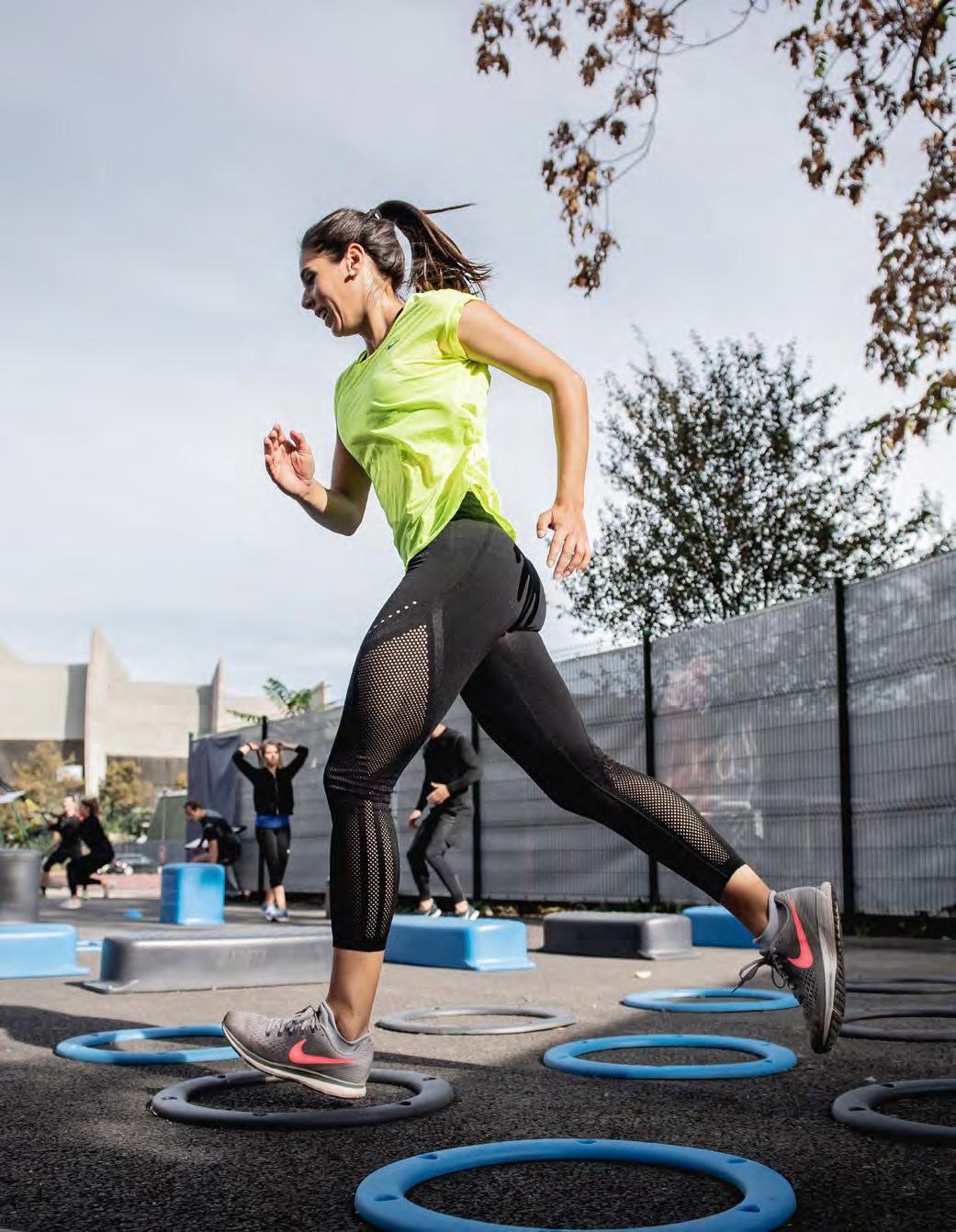
More Allegheny County residents are physically healthy.
Key Metric: By 2027, more than 90% of Allegheny County residents will report having good, very good, or excellent health (baseline 87.4%, 2019)
Source: Behavioral Risk Factor Surveillance System (BRFSS)
Goal 1. People of all ages engage in behaviors that promote physical health and reduce the risk of chronic diseases.
1.1 More infants are fed human breastmilk.
1.1.1. Increase human breastmilk feeding from 81.7% (2019) to 84% (2027).
Source: PA Birth Certificate
1.1.2. Increase the proportion of infants who receive human breastmilk for eight or more weeks.
Source: Pregnancy Risk Assessment Monitoring System (PRAMS) Baseline PA 60.7% (2015) – await 2022 Allegheny County Pregnancy Risk Assessment
1.2 More children, teens and adults have healthy eating behaviors.
1.2.1. Increase proportion of children and teens who weekly consume fruit from 91% (2018) to 93.7% (2027) and vegetables from 84% (2018) to 86.5% (2027).
Source: Youth Risk Behavioral Surveillance System (YRBS)
1.2.2. Decrease the proportion of children and teens who weekly consume sugar sweetened beverages from 68% (2018) to 64.6% (2027).
Source: YRBS
1.2.3. Increase the proportion of adults who consume at least five servings of fruits and/or vegetables per day from 11% (2019) to 16% (2027).
Source: BRFSS
1.2.4. Decrease the proportion of residents who are food insecure from 11.2% (2020) to 10.1% (2027).
Source: Feeding America
1.3 More children, teens and adults are physically active.
1.3.1. Increase the proportion of children and teens who report being physically active each week from 84% (2018) to 88% (2027).
Source: YRBS
1.3.2. Reduce the proportion of adults who report no leisure-time physical activity in the past month from 22% (2020) to 20% (2027).
Source: BRFSS
1.3.3. Add at least 50 miles of accessible trails for recreational use by 2027, with at least 15 miles in environmental justice communities.
Source: Allegheny County Economic Development (ACED)
1.4 Fewer people use tobacco products, including vaping.
1.4.1. Reduce the proportion of children and teens who report tobacco use from 12% (2018) to 10.8% (2027) and e-cigarette use from 27% (2018) to 24.3% (2027).
Source: YRBS
1.4.2. Reduce the proportion of adults who report daily tobacco/e-cigarette use from 12% (2020) to 10.8% (2027).
Source: BRFSS
Strategies
a. Increase the number of trained lactation support professionals, especially people of color.
b. Increase healthy food choices at child care programs, preschools, schools, after-school programs, family centers, senior centers, home-delivered meals and health care facilities.
c. Provide assistance to community groups to promote healthier food and drink choices.
d. Expand access to and affordability of groceries that include fresh fruits and vegetables in the county, including increasing WIC approved grocery stores.
e. Expand participation in Live Well Allegheny, and similar programs that promote physical activities, and increase access to outdoor and indoor walking paths or sites that include access for those with physical and behavioral needs.
f. Promote the use of tobacco free services and the PA Quit Helpline and educate the community on the impact of second-hand smoke.
g. Support health insurer and employer-based wellness programs, including programs that support breastfeeding, healthy diets and physical activity.
Partners
Allegheny County Departments: Children Initiatives (DCI), ACED, Human Services (DHS), Parks, Redevelopment Authority of Allegheny County (RAAC)
Health systems and Federally Qualified Health Centers (FQHCs)
Community-based organizations focused on public health and healthy living
Culinary training programs
Programs that support local farming
Organizations that support lactation services and education
Organizations that encourage and support physical activity
Goal 2. All people have appropriate places to obtain medical and dental care.
2.1 More infants and children have age-appropriate preventive medicine visits as recommended by the American Academy of Pediatrics.
2.1.1. Increase by 5% the proportion of infants and children who meet Healthcare Effectiveness Data and Information Set (HEDIS) criteria for preventive medicine visits.
Source: Pennsylvania Pediatric Health Network (expect baseline data in early 2023)
2.1.2. Increase the proportion of teens who report having an annual preventive medicine visit from 72% (2018) to 78% (2027).
Source: YRBS
2.2. More people have at least one dental visit a year.
2.2.1. By 2027, increase by 5% the proportion of children who had a dental visit in the past year.
Source: PA Medicaid data, Pennsylvania Pediatric Health Network (pending baseline data for comparison)
2.2.2. Increase the proportion of teens who had a dental visit in the past year from 71% (2018) to 74.5% (2027).
Source: YRBS
2.2.3. Reduce the proportion of adults who did not have a dental visit in the past year from 31% (2020) to 28% (2027).
Source: BRFSS
2.3. More adults identify a usual source for primary care services.
2.3.1. Increase the proportion of adults who report having a personal health care provider from 83% (2020) to 87% (2027).
Source: BRFSS
2.3.2. Decrease the proportion of adults (age 18-64) who report not having health insurance from 6% (2020) to 5.4% (2027).
Source: BRFSS
a. Increase the use of community health workers (CHWs), peer navigators, or other services that connect individuals to needed health care services, especially preventive care.
b. Advocate to get the work of CHWs designated as reimbursable costs by Medicare and Medicaid.
c. Increase the number of dental providers who accept Medicaid.
d. Increase the number of dental providers (dental assistants, dental hygienists and dentists) in the county.
e. Promote the use of Pennsylvania’s online health and dental insurance marketplace (PENNIE) and the work of community-based organizations to help enroll people in health insurance, including Medicaid, Children’s Health Insurance Program (CHIP), and the marketplace, including people recently released from incarceration.
f. Promote and support use of telemedicine when appropriate, especially for primary care clinics, that care for people with public health insurance or are uninsured.
g. Identify and reduce gaps in care needs and support policy changes to Medicaid and Medicare.
h. Increase access to transportation to get people to medical appointments.
Allegheny County Departments: DCI, DHS
Commonwealth Departments of Health and Human Services (PA DoH and PA DHS)
Health systems, Veterans Administration (VA), FQHCs
Community-based organizations that focus on public health and healthier living
CHW organizations, PA Coalition for Oral Health, PA Dental Task Force
Health care providers (especially primary care providers) and dental health care providers
Pittsburgh Regional Transit (PRT) and other transportation agencies
Goal 3. Decrease disparities in life expectancy and chronic diseases in Allegheny County.
3.1. Reduce the racial disparity in infant and maternal mortality.
3.1.1. Reduce the infant mortality rate for Black children from 16.2 per 1,000 live births (2019) to 10 per 1,000 live births (2027).
Source: PA Death Certificate
3.1.2. Reduce the number of sleep-related infant deaths from a 3-year average of 7.5 per 10,000 live births (2017-2019) to 6.0 per 10,000 live births (2025-2027).
Source: PA Death Certificates and Child Death review team
3.1.3. Reduce the disparity in 5-year average death rates among people who gave birth within the past three years.
Source: PA Death Certificates and Child Review Team (5-year average, pending baseline data)
3.2. Reduce the disparity in mortality rates from chronic diseases (diabetes, hypertension, heart disease, cancer).
3.2.1. Reduce the heart disease mortality rates for residents from 186 per 100,000 (2019) to 170 per 100,000 (2027).
Source: PA Death Certificate
3.2.2. Reduce the heart disease mortality rate for Black residents from 267.9 per 100,000 (2019) to 250 per 100,000 (2027).
Source: PA Death Certificate
3.2.3. Reduce the diabetes mortality rate for residents from 17 per 100,000 (2019) to 15 per 100,000 (2027).
Source: PA Death certificate.
3.2.4. Reduce the diabetes mortality rate for Black residents from 34.1 per 100,000 (2019) to 30 per 100,000 (2027).
Source: PA Death Certificate
3.3. Reduce the disparity in life expectancy.
3.3.1. Increase life expectancy for Black residents from 71.4 years of age (2018-2020) to 74 years of age (2025-2027).
Source: County Health Rankings
3.3.2. Reduce premature mortality rates for Black residents from 660 per 100,000 (20182020) to 620 per 100,000 (2025-2027).
Source: County Health Rankings
3.3.3. Increase life expectancy for all residents from 77.9 years of age (2018-2020) to 79 years of age (2025-2027).
Source: County Health Rankings
a. Support and promote the Allegheny County BIRTH Plan for Black Babies and Families: Battling Inequities & Realizing Transformational Health Outcomes.
b. Increase participation in Allegheny County’s Hello Baby program and other programs that support the creation of healthy and safe family environments, including those that work to reduce sleep-related deaths.
c. Increase community-based screening and education for diabetes, hypertension and cancer.
d. Support and promote programs that reduce all tobacco product use.
e. Support regional transportation providers to expand services in areas with a higher proportion of residents of color and reduce fares for low-income residents.
f. Support and promote efforts to reduce air pollution and other environmental exposures in environmental justice communities.
g. Increase the number of health care providers of color.
Allegheny County Departments: DCI, DHS
Healthy Start of Pittsburgh and organizations focused on family and child health
Partner organizations for Centers for Disease Control (CDC) funded programs like Racial & Ethnic Approaches to Community Health (REACH), CHW, and Overdose Data to Action (OD2A)
Organizations focused on health equity
Health care organizations, including FQHCs and VA
Pittsburgh Council on Higher Education (PCHE)
PRT and transportation agencies

More Allegheny County residents experience mental well-being.
Key Metric: By 2027, fewer than 11% of residents will answer ‘not good’ for 14 or more days to the following question: “Now thinking about your mental health, which includes stress, depression and problems with emotions, for how many days during the past 30 days was your mental health not good? (Baseline 14%, 2019).
Source: BRFSS
Goal 4. People have access to behavioral health services, including treatment for substance use disorders.
4.1. More people receive mental health or substance use treatment.
4.1.1. Increase the proportion of teen and adult Pennsylvania Medicaid recipients who receive mental health services in the past year from baseline of 19 per 100 (2021) to 21 per 100 teen and adult Medicaid recipients (2027).
Source: PA Medicaid
4.1.2. Increase the proportion of teen and adult Pennsylvania Medicaid recipients with a substance use disorder who participate in a treatment program in the past year from baseline 6 per 100 (2021) to 7 per 100 teen and adult Medicaid recipients (2027).
Source: PA Medicaid
4.2. Fewer teens use alcohol and drugs.
4.2.1. Reduce the proportion of teens reporting alcohol use in the past month from 30% (2018) to 27% (2027).
Source: YRBS
4.2.2. Reduce the proportion of teens reporting cannabis use in the past month from 32% (2018) to 29% (2027).
Source: YRBS
4.3. Fewer adults use alcohol and drugs in ways that are hazardous to themselves or others.
4.3.1. Reduce the proportion of adults who are at risk for heavy drinking (averaging more than two drinks a day) from 9% (2020) to 7% (2027).
Source: BRFSS
4.3.2. Reduce the proportion of adults who report using pain medicine not prescribed to them in the past year from 7% (2020) to 5% (2027).
Source: BRFSS
4.4. Fewer people die from an overdose.
4.4.1. Reduce the overdose mortality rate from 58.8 per 100,000 (2021) to 53 per 100,000 (2027).
Source: Allegheny County Office of Medical Examiner (ACOME) (Allegheny County Overdose Dashboard) and PA Death Certificates
4.5 Fewer people die from suicide.
4.5.1. Reduce the suicide mortality rate from 14.5 per 100,000 (2019) to 13 per 100,000 (2027). Source: PA Death Certificates
4.6. The racial disparity in deaths from overdose decreases.
4.6.1. Reduce the overdose mortality rate for Black residents from 115.3 per 100,000 (2021) to 100 per 100,000 (2027).
Source: ACOME (Allegheny County Overdose Dashboard)
Strategies
a. Support the Department of Human Services, and others, in efforts to expand access to behavioral health services, including the creation of additional crisis support services and mobile units.
b. Promote access to mental health and substance use treatment through low-barrier, technology-supported strategies.
c. Increase the number of certified recovery specialists, peer support specialists and community health workers who help facilitate access to behavioral health and substance use services.
d. Increase access to medication for opioid use disorder by:
i. Working with community providers to conduct outreach and training to health care providers to normalize medication for opioid use disorder prescribing in primary care settings.
ii. Supporting overdose education and reducing stigma through direct education and ad campaigns, including referral to recovery counseling services.
iii. Increasing accuracy of active practitioner lists through provider outreach.
e. Incorporating people with lived experience into all areas of the work.
f. Revise Allegheny County Health Department Article II: Syringe Services to make it easier for programs and municipalities to support sterile syringe programs.
g. Conduct workshops on the safe administration of Narcan.
h. Support and expand efforts to promote social connectedness for seniors.
i. Increase educational and communication efforts to destigmatize behavioral health needs.
Partners
Allegheny County Departments: ACOME, DCI, DHS
Health care organizations, including FQHCs, academic health programs and behavioral health care organizations
Community Health Worker Collaborative Overdose Data to Action (OD2A) partners
Organizations with a focus on aging
Health communications organizations
Substance use treatment program providers
Goal 5. People in Allegheny County will participate in programs and activities that support mental health and well-being.
5.1. More families with infants/toddlers participate in programs with demonstrated effectiveness to improve outcomes..
5.1.1 Increase the number of children served by evidence-based home visiting models from 6,600 (2019) to 7,300 (2027).
Source: ACDHS and ACHD
5.1.2. Increase the number of Early Head Start – Child Care Partnership slots from 388 (2022) to more than 500 (2027).
Source: DCI or Council of Three Rivers American Indian Center (COTRAIC)
5.2. More children, birth to five years old, attend high-quality early learning programs.
5.2.1. Increase equitable enrollment in high-quality child care programming for children birth to age 5 from 33% (2022) to 43% (2027) for children accessing state funded subsidized child care (Child Care Works) or Allegheny County’s Child Care Matters Pilot program.
Source: PA Office of Child Development and Early Learning (PA OCDEL).
5.2.2. Increase equitable enrollment in high-quality child care programming for children ages 5 to 12 from 24% (2022) to 40% (2027) for children accessing state funded subsidized child care (Child Care Works) or Allegheny County’s Child Care Matters Pilot program.
Source: PA OCDEL
5.3. More children and teens have access at their schools to a social and emotional health curriculum or services.
5.3.1. Develop and deploy by 2027 a standard for determining the number of schools and early learning providers that offer social and emotional health curricula or services.
5.3.2. Decrease the proportion of teens who report depressive symptoms that interfere with their activity in the past year from 39% (2018) to 29% (2027).
Source: YRBS
5.4. More adults have better mental health.
5.4.1. Decrease the proportion of adults who report having poor mental health (not good 14 or more days in the past month) from 13% (2021) to 11% (2027).
Source: BRFSS
Strategies
a. Support the Department of Children Initiatives to increase the number of children served in quality child care, preschool and after-school programming.
b. Support the Department of Human Services in efforts to expand access to behavioral health services, including services for children in schools and the community.
c. Support the work of the Allegheny Intermediate Unit to provide evidence-based social and emotional programming in schools and the community.
d. Increase participation in Allegheny County’s Hello Baby program and other programs that support the creation of healthy and safe family environments.
e. Increase the availability of community-led, informal supports that individuals or families can use for mental health and well-being and smooth pathways to more formal services.
f. Continue to promote Stand Together, an anti-stigma campaign in Allegheny County schools.
g. Increase the pipeline of behavioral health professionals trained to work in early learning and school settings.
Partners
Allegheny County Departments: DCI, DHS
Schools and intermediate units
Family support centers
Child care, preschool, afterschool providers, and organizations that support them
Community-based organizations and foundations focused on children and children’s advocacy, including those focused on anti-bullying and inclusion
Higher education focused on teacher training and training school-based staff

More people in Allegheny County live in safe and resilient communities.
Key Metric: By 2027, at least 98% of people in Allegheny County will respond “safe” or “extremely safe” to the following question, “How safe from crime do you consider your neighborhood to be?” Baseline was 95% in 2017.
Source BRFSS
6. More people live in stable and safe housing.
6.1. More people are stably housed.
6.1.1. Reduce by 2% each year the Point-in-Time (PIT) homeless count in shelters or transitional housing programs and unsheltered homeless population.
Source: DHS
6.1.2. Reduce the percentage of households that are rent-burdened from 47.7% (2021) to 42% (2027).
Source: 2021 American Community Survey 1-year Selected Population Profile
6.1.3. Reduce the number of teens who report having unstable housing from 16% (2018) to 12% (2027).
Source: YRBS
6.1.4. Add at least 450 affordable housing units by 2027.
Source: ACED
6.2. Fewer people live in housing that does not meet health standards.
6.2.1. By 2027, increase compliance for abatement for complaint housing cases with Class 1 or Class 2 violations by 15% from 60% (2021) to 75% (2027) in compliance.
Source: ACHD Housing Program
6.3. Fewer children have elevated blood lead levels.
6.3.1. Reduce the proportion of children with an elevated blood lead level (above 3.5µg/dL) from 2.7% (2021) to 2.0% (2027).
Source: PA National Electronic Disease Surveillance System (PA NEDSS)
a. Update the Allegheny County Health Department’s regulations Article VI: Housing & Community Environment and Article XXIII: Universal Blood Lead Level Testing.
b. Support and grow programs that work with people using shelters, living on the streets or unstably housed to achieve stable housing.
c. Educate families, child care and early learning providers about the need for lead screening in young children.
d. Link those with elevated blood lead levels to services to identify and remediate sources of exposure.
e. Support policies that reduce the amount of blighted and abandoned properties.
f. Support policies that increase the availability of affordable and safe housing.
g. Support community safety and accessibility by improving lighting, expanding tree canopy, planting gardens and enhancing parks.
Allegheny County Departments: DCI, ACED, DHS, Parks and Sustainability
Allegheny County Authorities: RAAC and Housing
Local government units, councils of government
Community-based organizations focused on urban development, tree and garden planting and maintenance
Environmental and housing advocacy organizations
Goal 7. Fewer people experience violence in their homes and communities.
7.1. The number of gun-related injuries decrease.
7.1.1. Reduce the number of people who have an emergency department visit for a gunrelated injury from 33 per 100,000 (2021) to 30 per 100,000 (2027) and hospitalizations from 15.9 per 100,000 (2021) to 14 per 100,000 (2027).
Source: EpiCenter and PA Health Care Cost Containment Council Inpatient Hospitalizations
7.1.2. Reduce calls for “shots fired” from 523 per 100,000 (2021) to 400 per 100,000 (2027).
Source: 911/EMS
7.2. The number of homicides decrease.
7.2.1. Reduce the number of homicides from 9.7 per 100,000 (2021) to 6 per 100,000 (2027).
Source: PA Death Certificates
7.3. The number of people experiencing violence in their homes decrease.
7.3.1. Reduce the number of adults reporting ever having experienced threats of physical violence from an intimate partner from 5% (2015) to 3% (2027).
Source: BRFSS
7.3.2. Reduce the number of children who were victims of substantiated child abuse from 82 per 100,000 children (2021) to 61 per 100,000 (2027).
Source: Allegheny County Dashboard for Child Fatalities and Near-Fatalities
7.3.3. Reduce the number of fatalities, and near fatalities, from suspected child abuse from 25 (2021) to 20 (2027).
Source: Allegheny County Dashboard for Child Fatalities and Near-Fatalities
7.3.4. Reduce the number of domestic violence (DV)/intimate partner violence (IPV) related homicides from 18 (2021) to 9 (2027).
Source: PA Coalition Against Domestic Violence (PCADV)
a. Provide training and technical assistance for organizations looking to implement the Cure Violence Model and other evidence-based violence prevention programs.
b. Expand the scope of work for the Office of Violence Prevention beyond gun violence to include additional aspects of violence.
c. Strengthen partnerships between government and local organizations that address violence.
d. Support evidence-based programs to improve self-regulation, conflict resolution, bystander response and others that disrupt the cycle of violence.
e. Implement recommendations made by Child Death Review and Act 33 Review processes.
Allegheny County Departments: Courts, DHS
Allegheny County IPV Taskforce
Local government units, councils of government
Community-based organizations focused on violence prevention, domestic violence and gun safety
Goal 8. More residents live in communities that are prepared to adapt to and absorb the impacts of climate change.
8.1. Develop a municipal-level climate resilience index.
8.1.1. By 2024, a climate resilience index will be developed and posted to the Allegheny County website.
Source: ACHD and Allegheny County Department of Sustainability
8.2. Increase the number of communities planning for and adapting to the impacts of climate change.
8.2.1. By 2027 and in response to the climate resiliency index, at least 25% of communities will have action plans designed to improve climate resiliency.
Source: Local government units, councils of government
8.3. Air quality continues to improve.
8.3.1. By 2027, reduce the annual average PM2.5 concentration by at least 12% (from 9.7 µg/ m³ in 2021 to 8.5 µg/m³ in 2027, on a countywide average basis).
Source: ACHD Air Quality Planning and Data Analysis Program
8.3.2. By 2027, reduce the number of days per year when sulfur dioxide (SO2) exceeds an AQI of 50 (from 36 in 2021 to 26 in 2027).
Source: ACHD Air Quality Planning and Data Analysis Program
Strategies
a. Review national examples of climate resiliency indices, adopt and develop best practices.
b. Expand awareness and engagement of vector control strategies and programs.
c. Support local governments in updating local codes or incentivizing the adoption of practices that mitigate climate change.
d. Expand community participation in low-cost air monitoring programs, especially those focused on sensitive populations and environmental justice communities (e.g., schools, childcare centers and senior facilities).
e. Support local governments in expanding and strengthening emergency preparedness planning and preparation for climate-related events.
Partners
Allegheny County Departments: ACED, Emergency Services (ACES), Parks, Sustainability
Allegheny County Authorities: PRT, Allegheny County Sanitary Authority (ALCOSAN)
Local governments
Community-based organizations, advocacy groups, and foundations focused on public health, the environment, and climate resiliency


Although dozens of organizations and hundreds of residents participated in the development of both the 2022 Community Health Assessment and the Plan for a Healthier Allegheny 2023-27, the ACHD plans to expand outreach to share the community’s plan, encourage those already working to achieve the goals and objectives, and recruit new parties to the effort.
Each year the ACHD will report to the community on the progress made towards improving the health of residents. In those areas with the greatest need for additional work, the ACHD will explore the formation of new strategic partnerships and initiatives. In this way, the ACHD will seek to apply its resources where they are most needed and encourage others to do the same.
Currently, the ACHD produces a variety of reports and maintains updated data on the health status and outcomes in the region, but tackling many of the metrics for the Plan for a Healthier Allegheny 2023-27 will require ongoing and regularly scheduled surveys. The ACHD and county partners are developing strategic and long-term plans to track the metrics identified in the Plan for Healthier Allegheny 2023-27. Potential strategies include oversampling county residents using ongoing national surveys or alternately fielding a county-specific survey every 3 to 4 years.
www.fourtheconomy.com